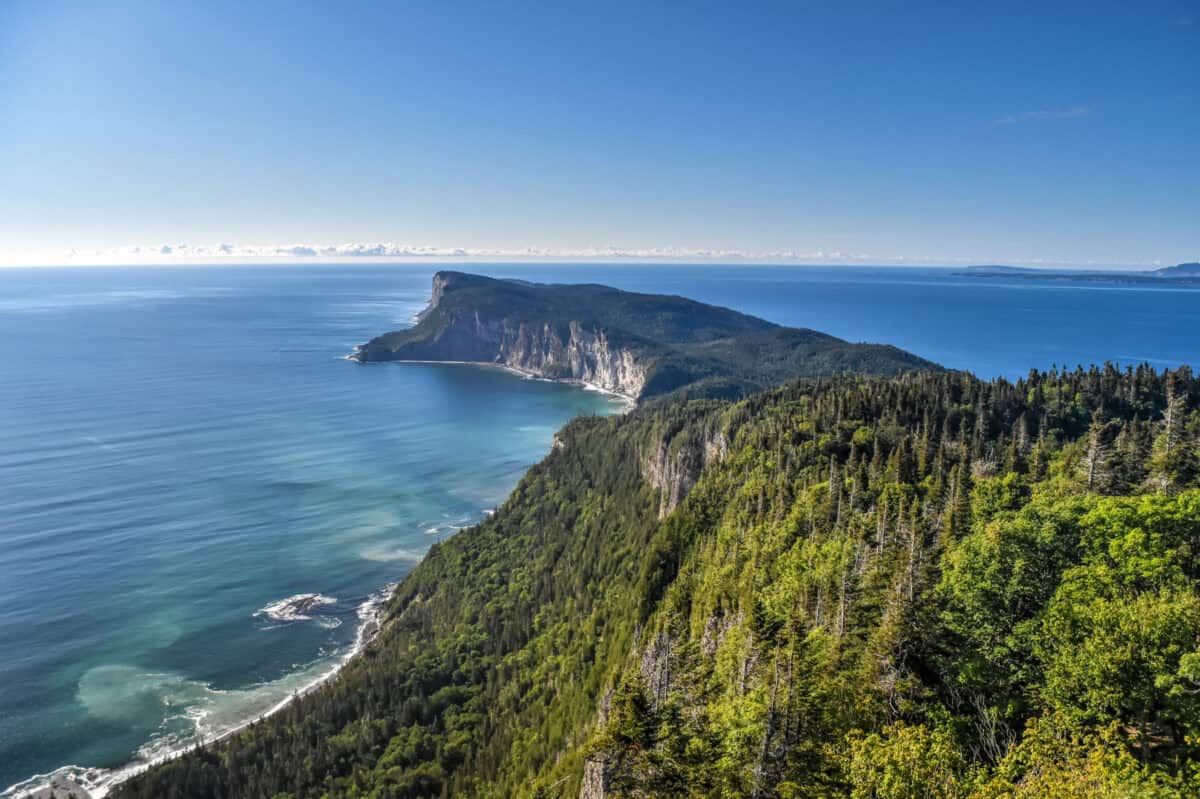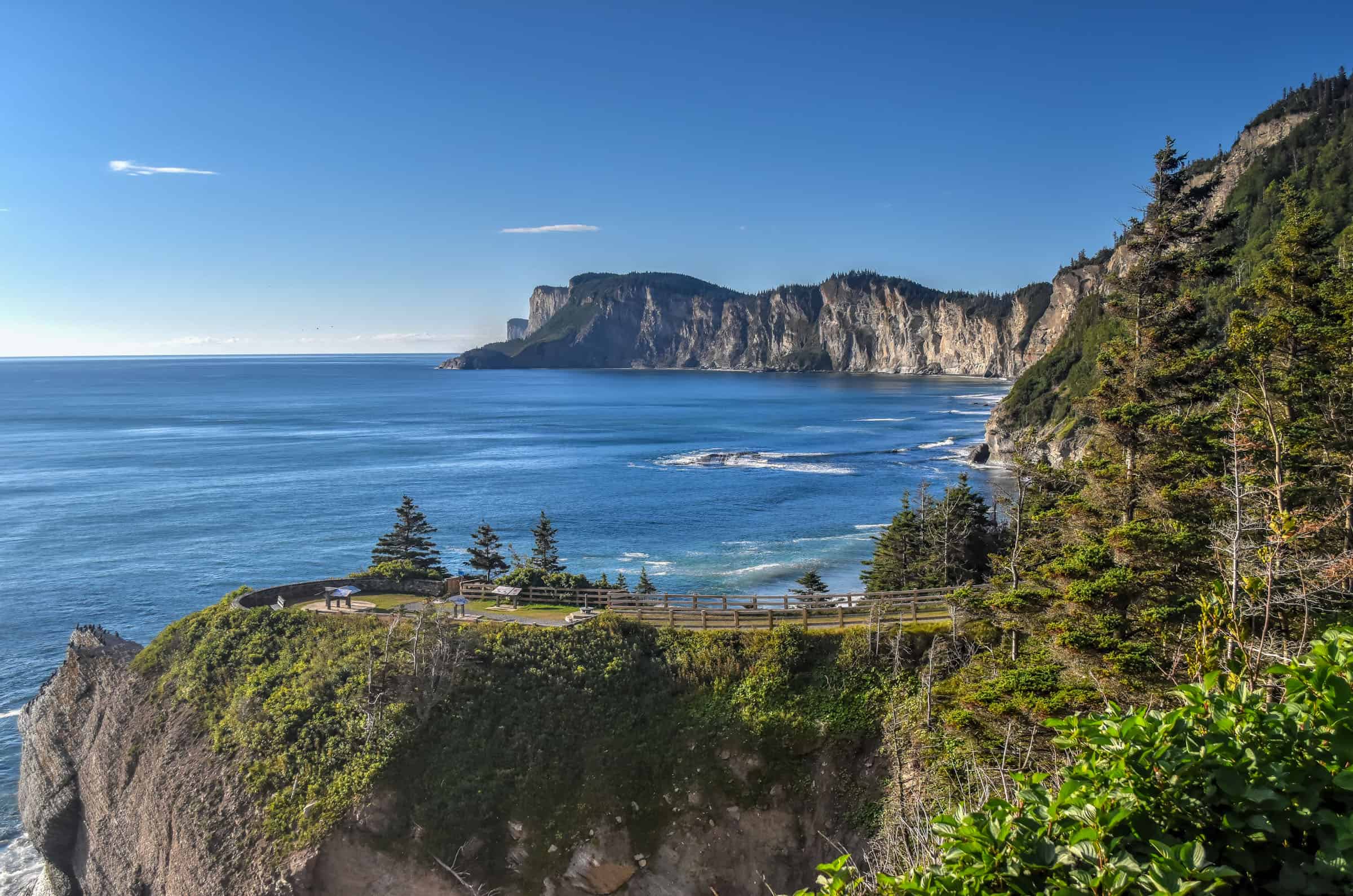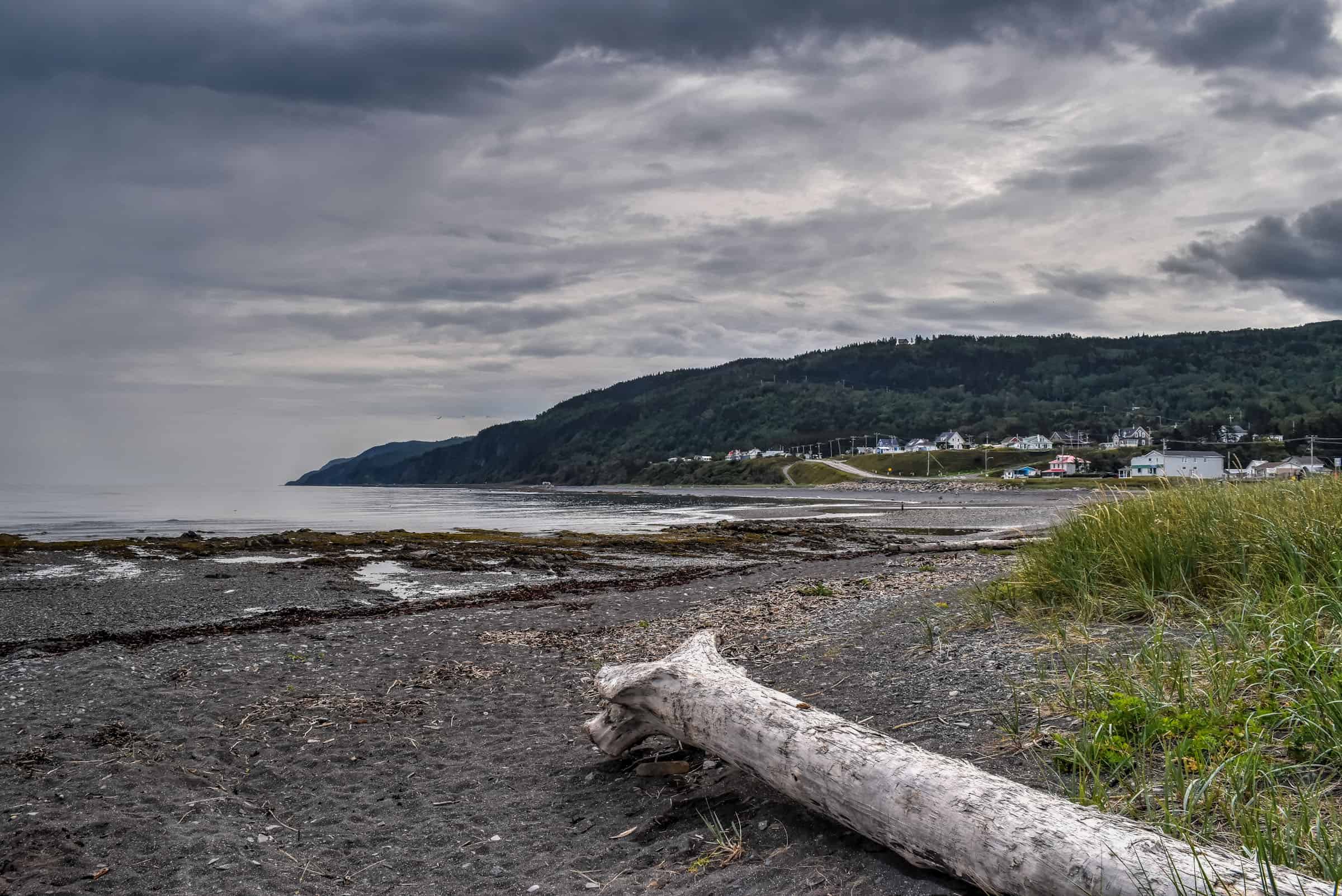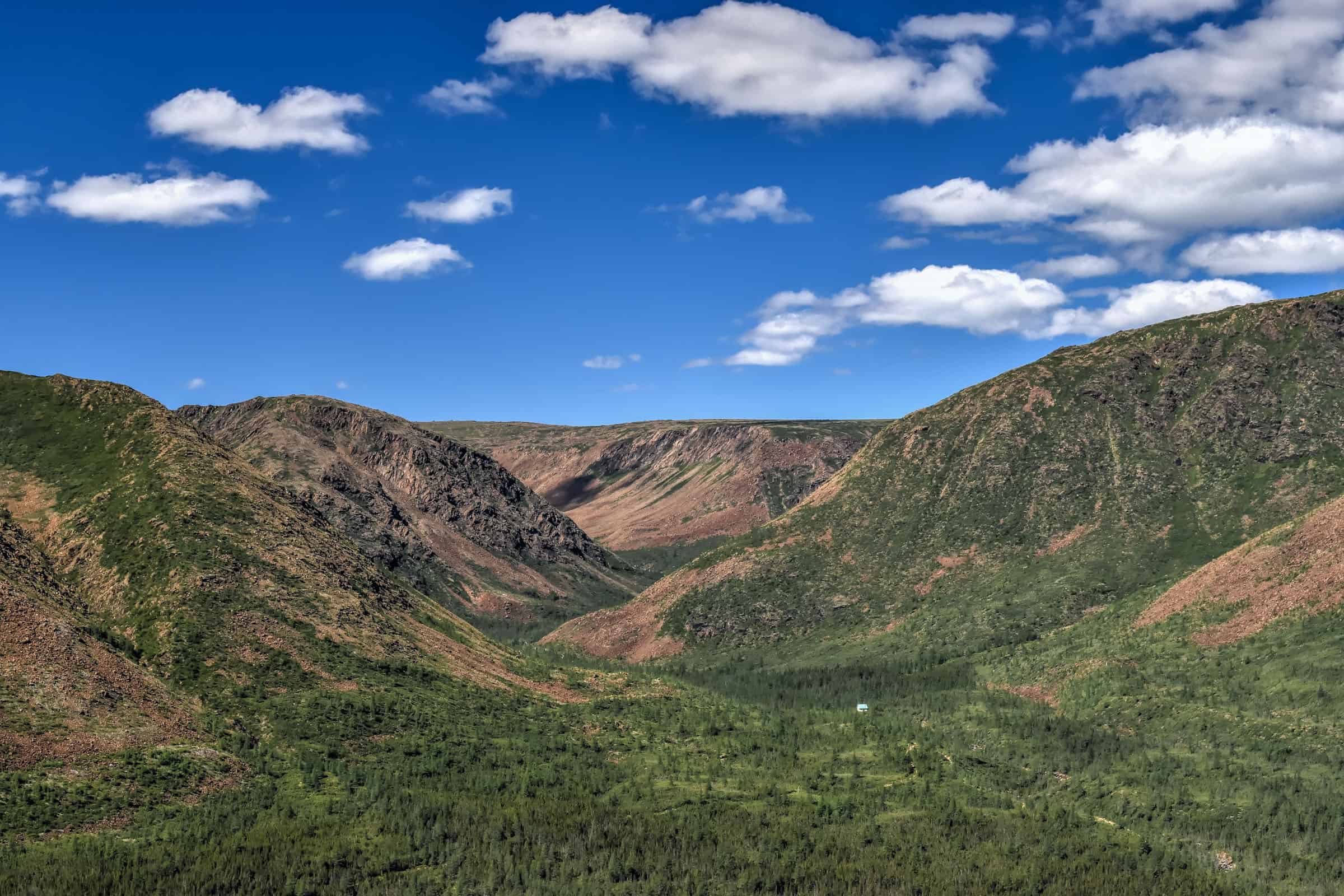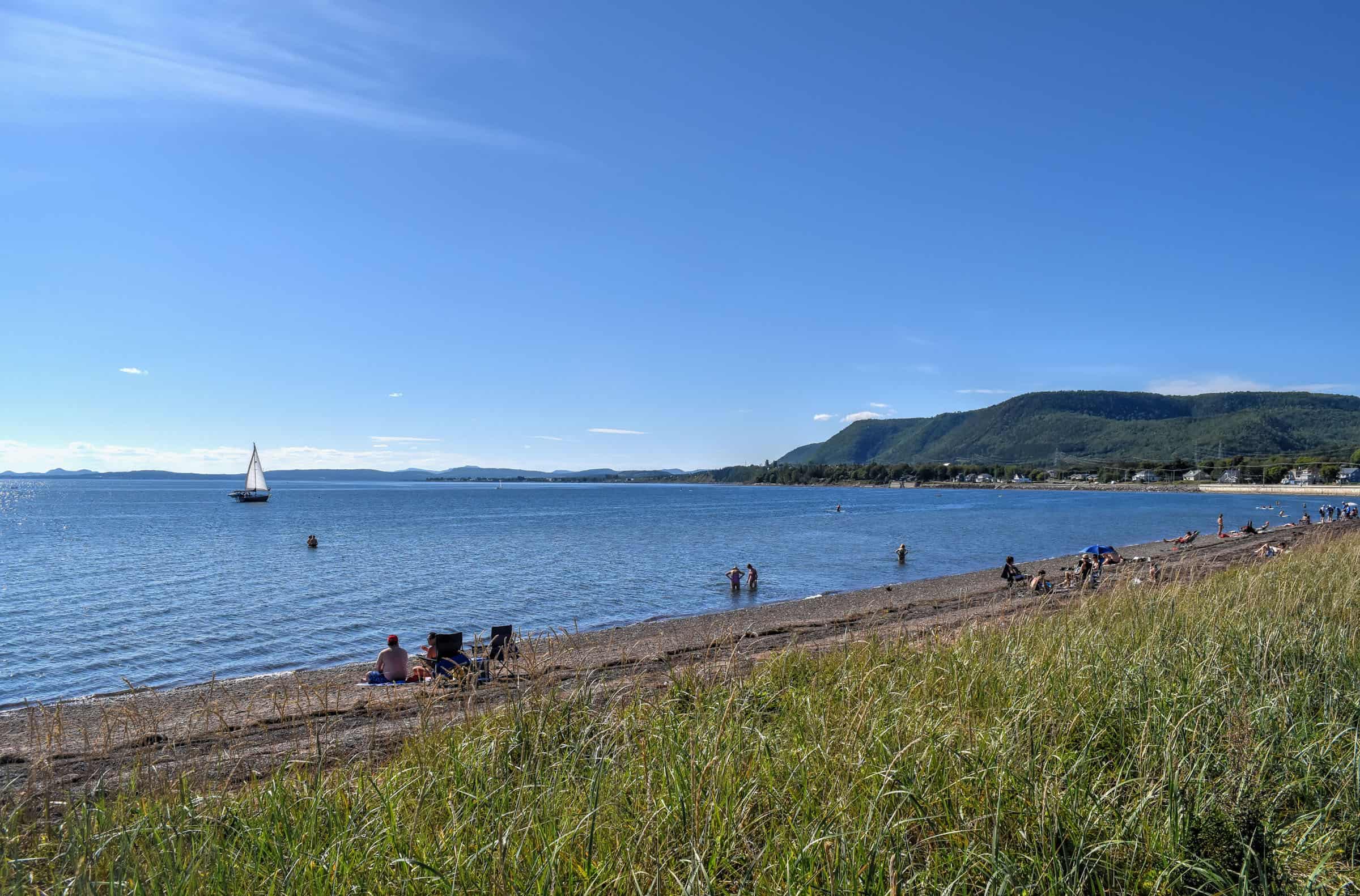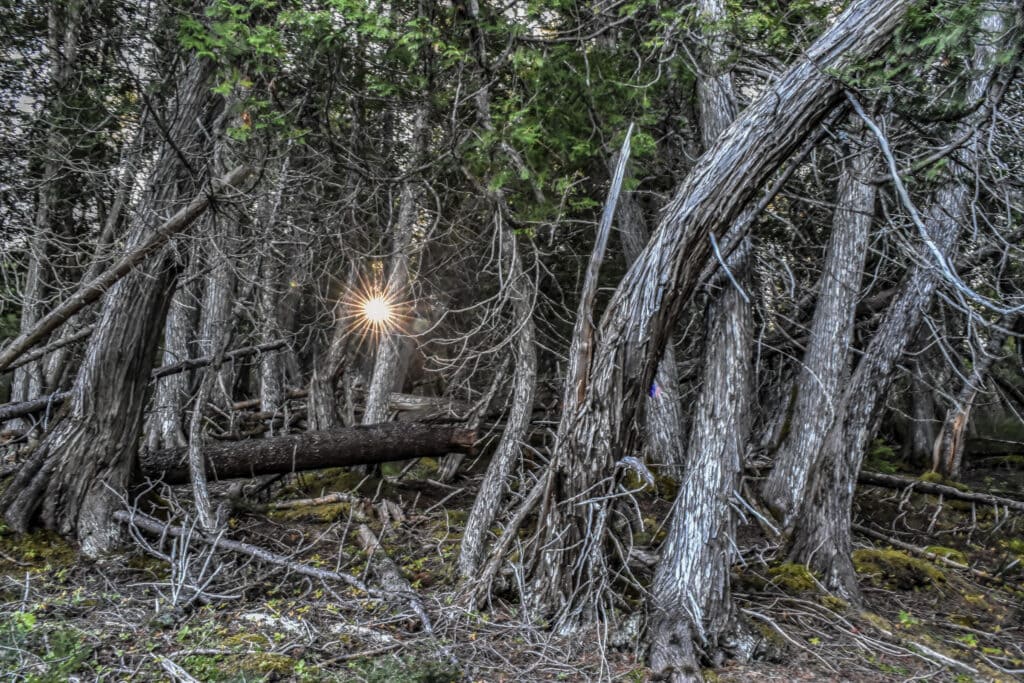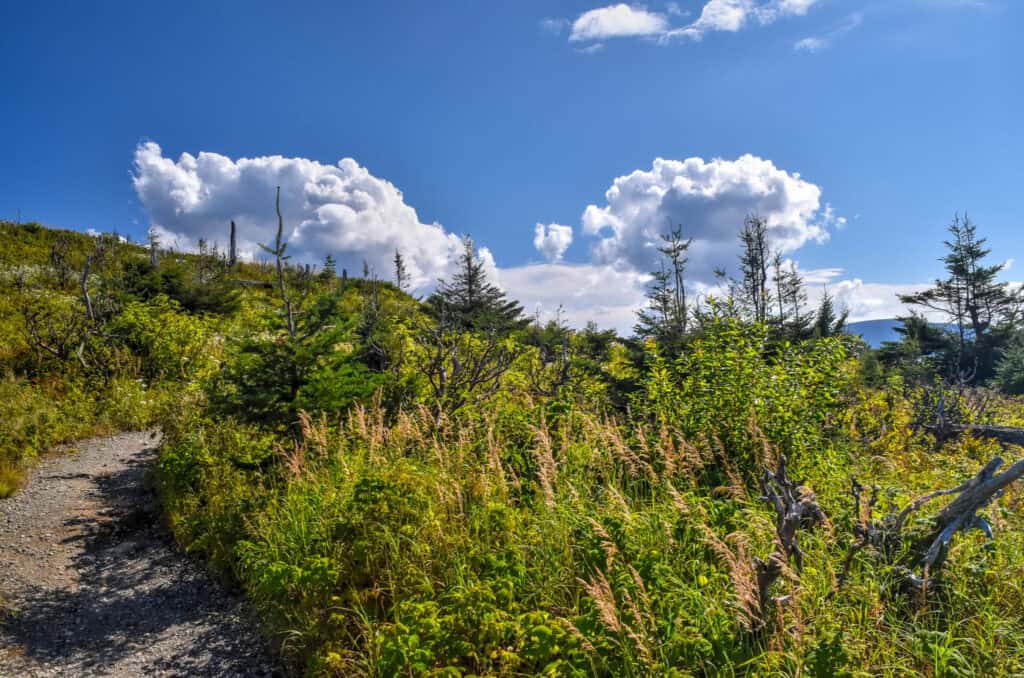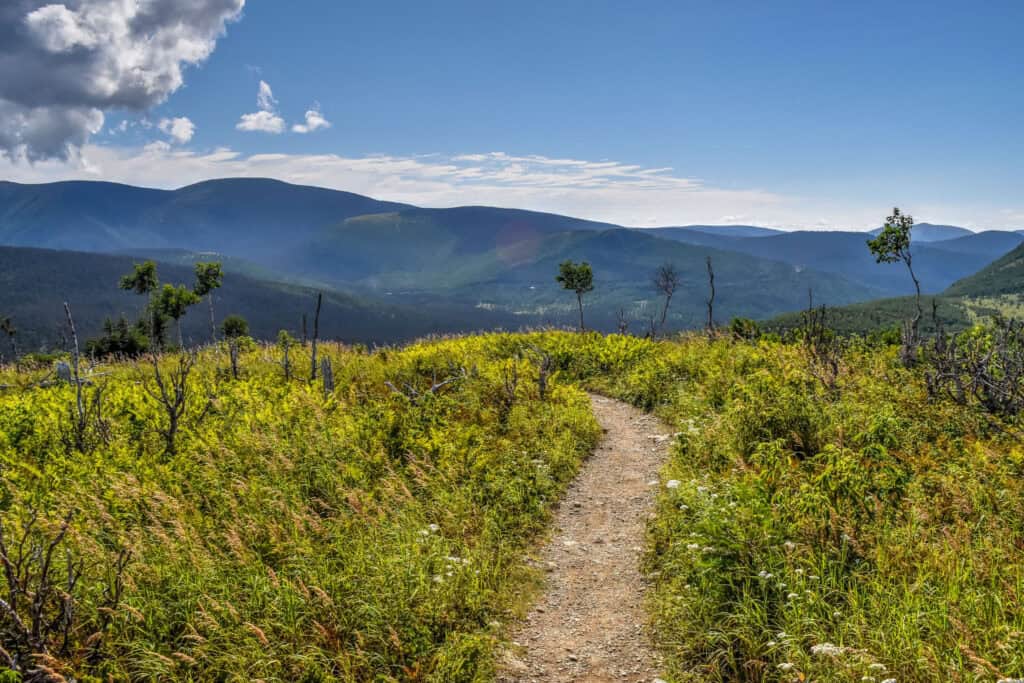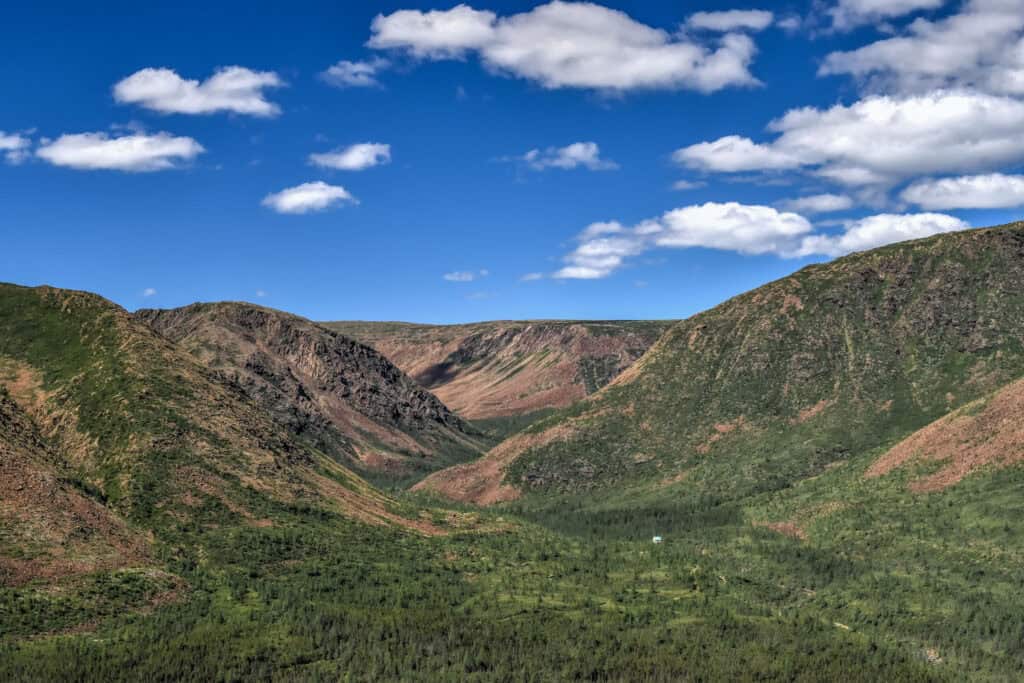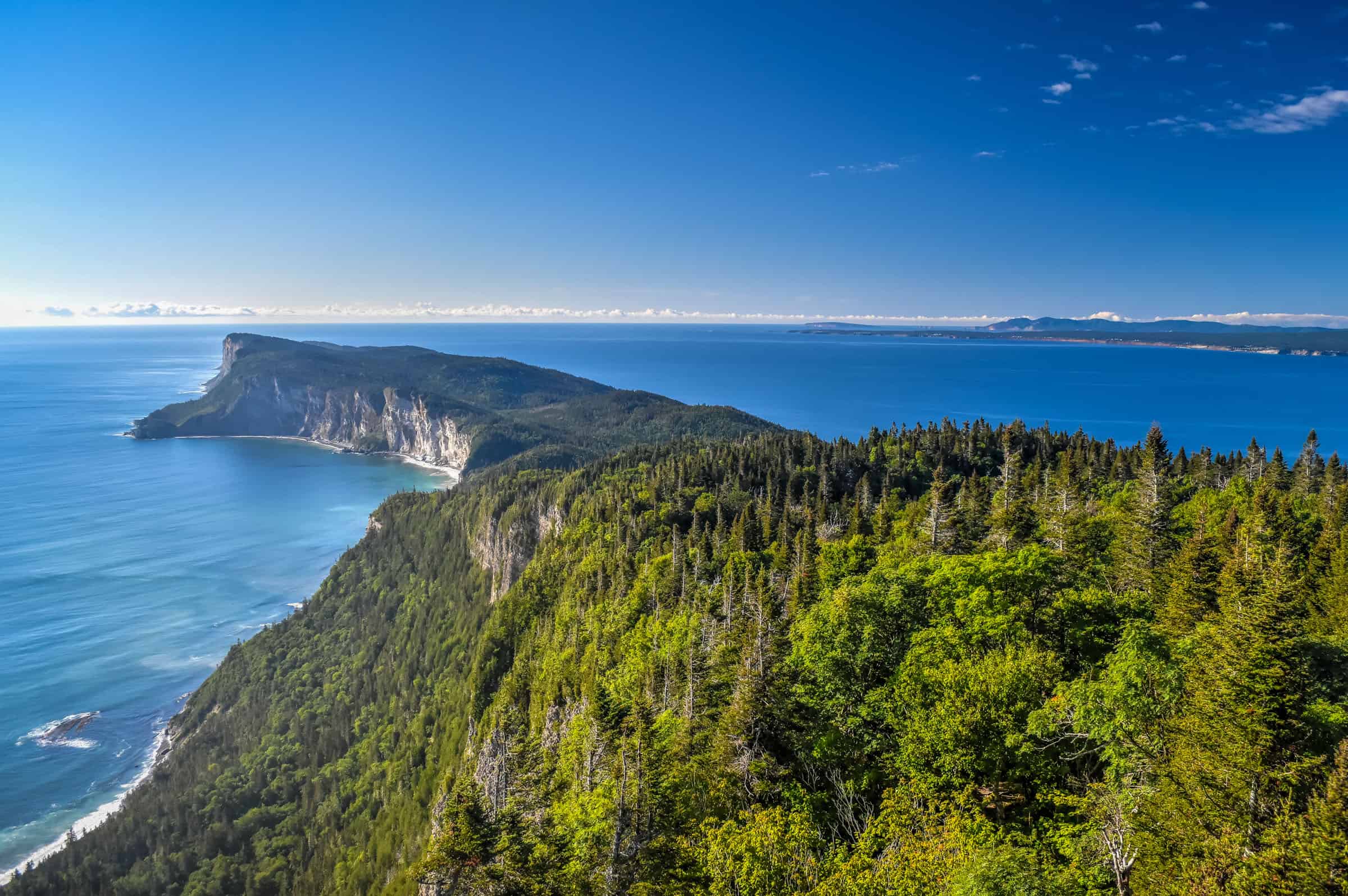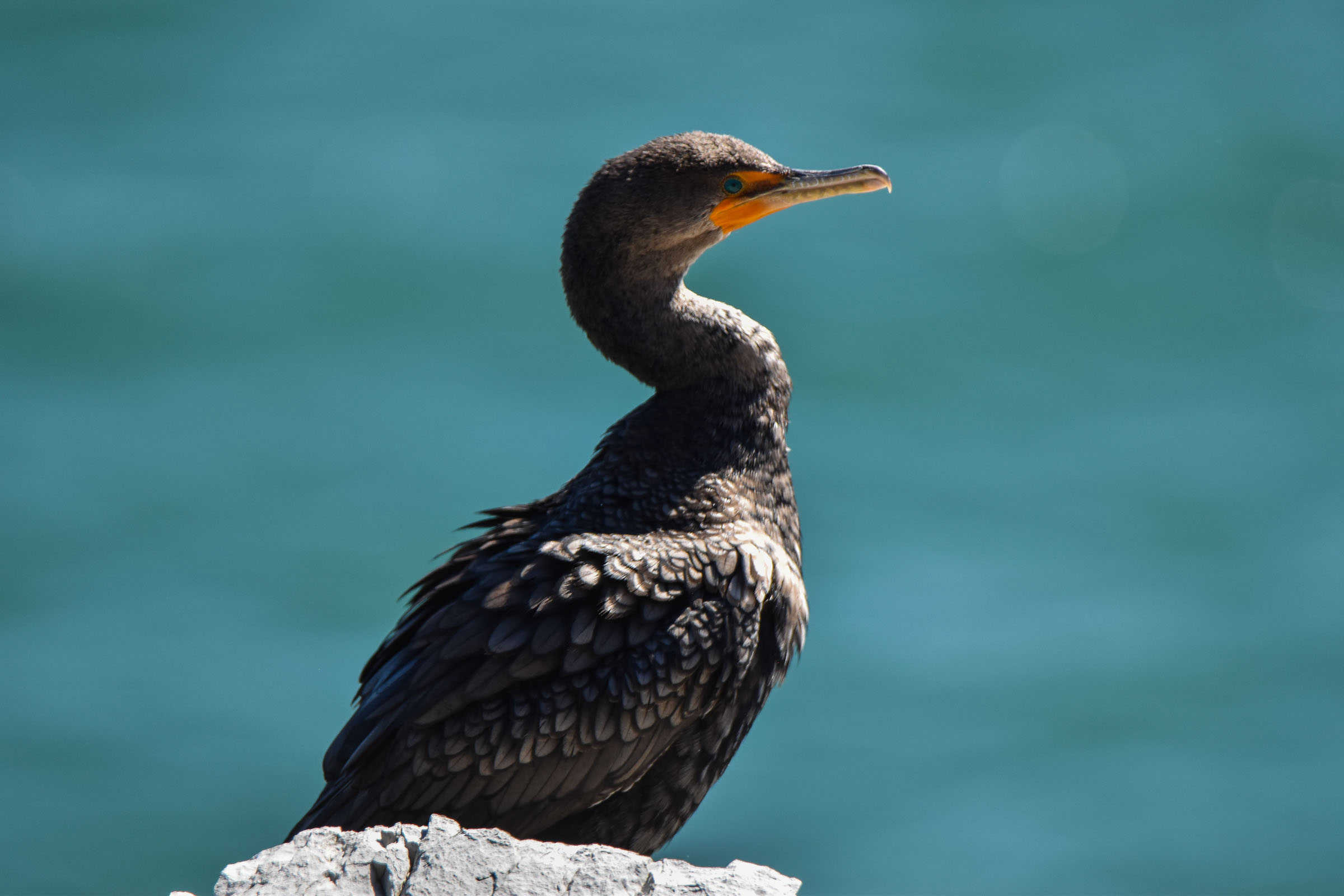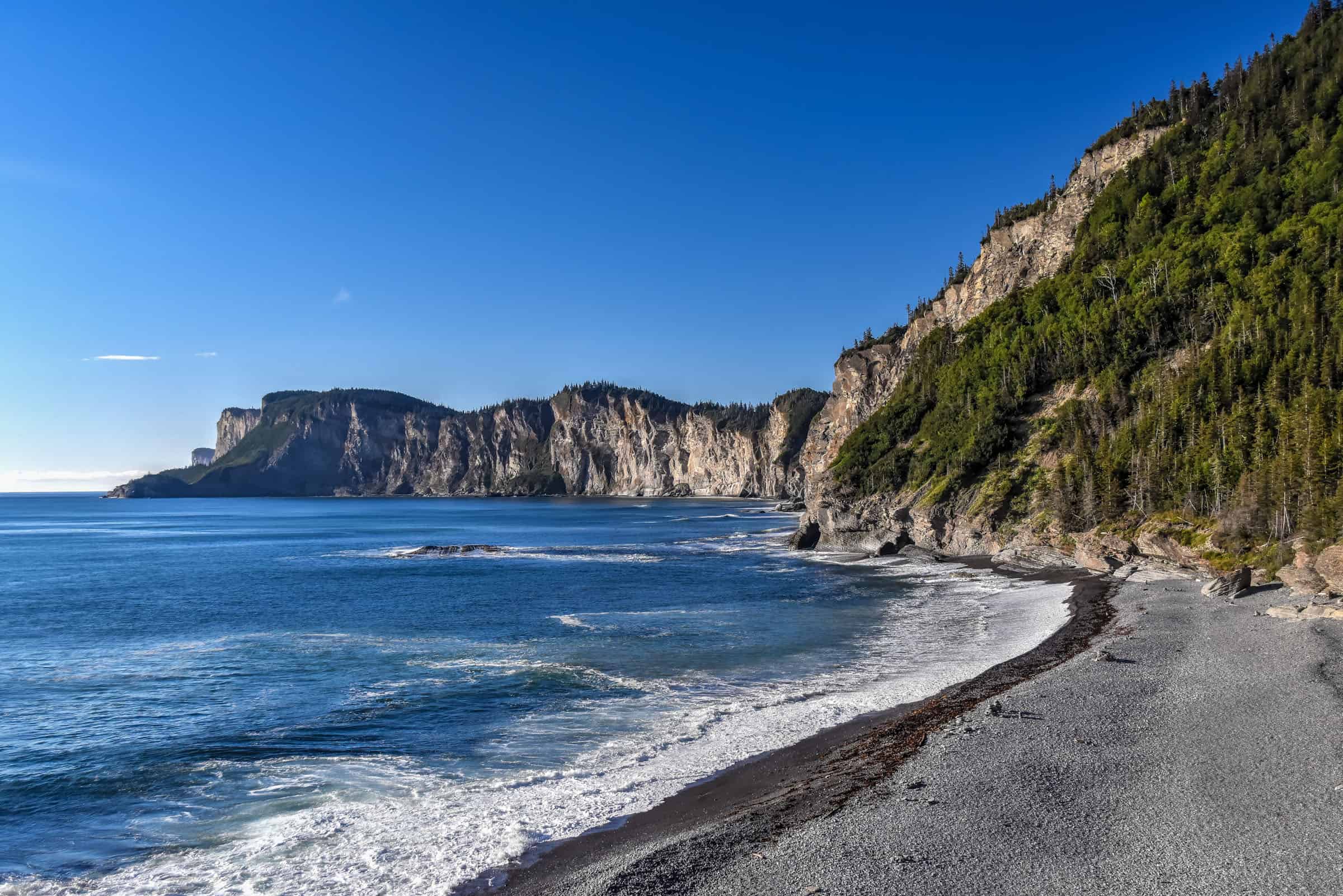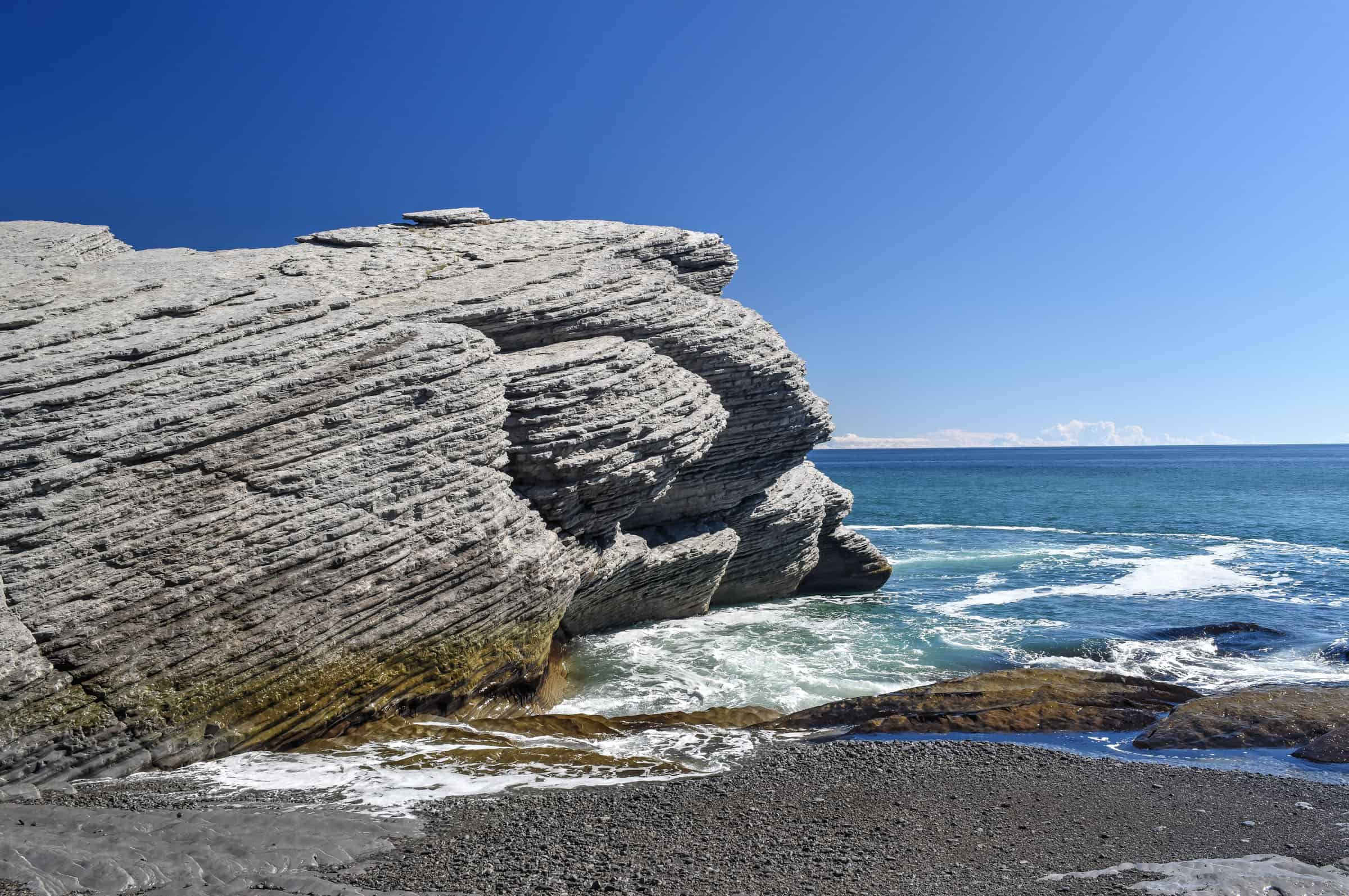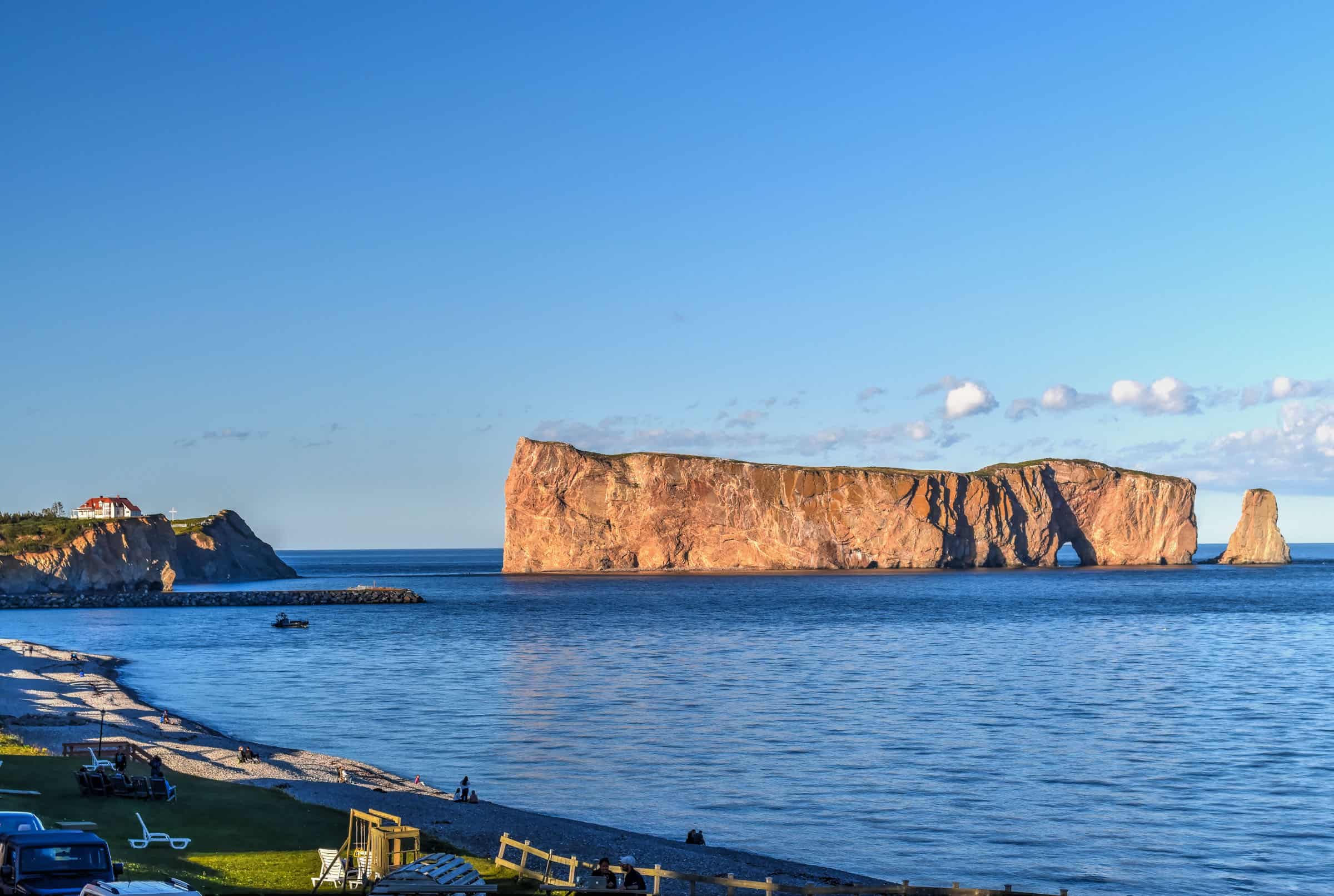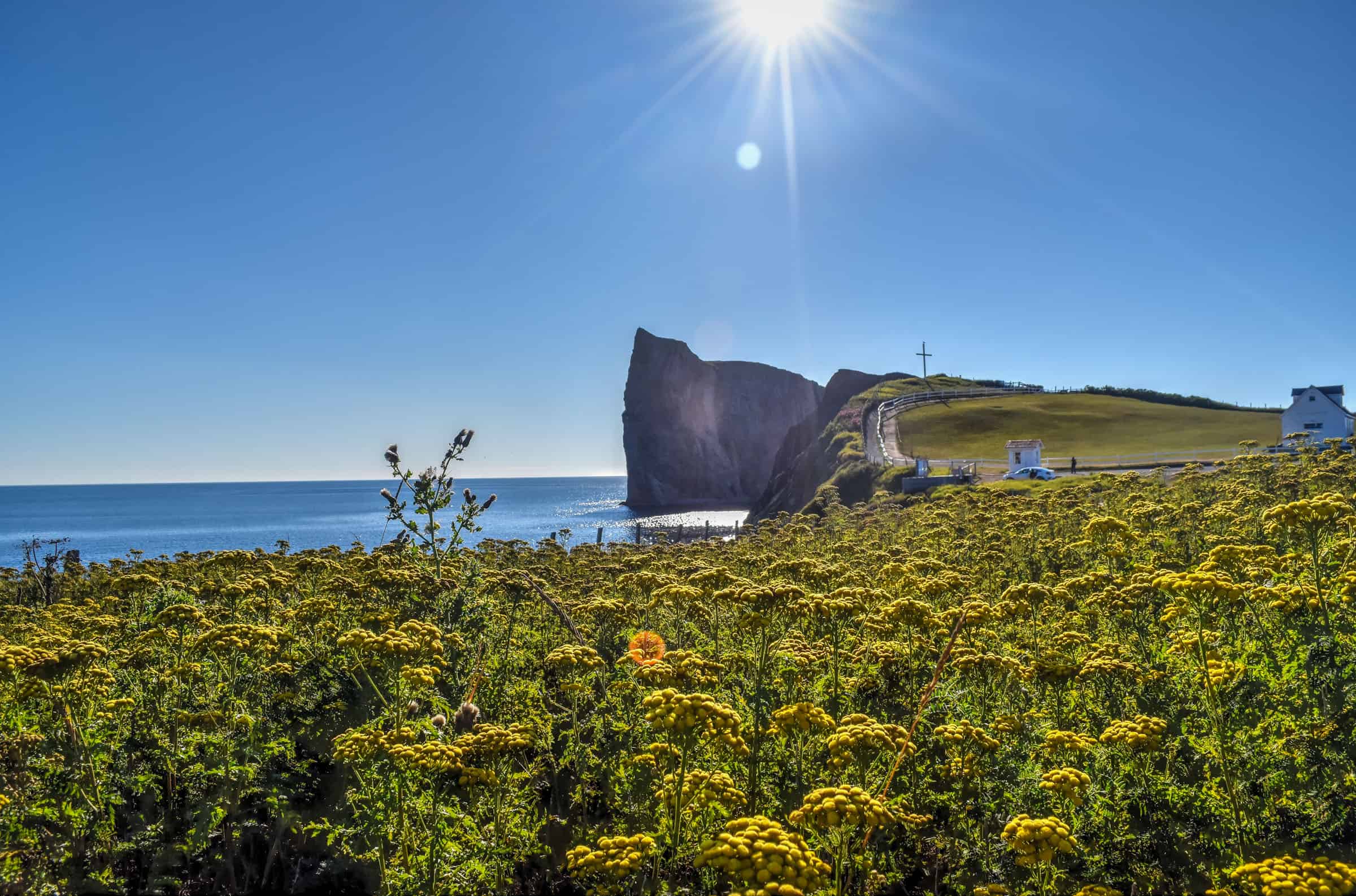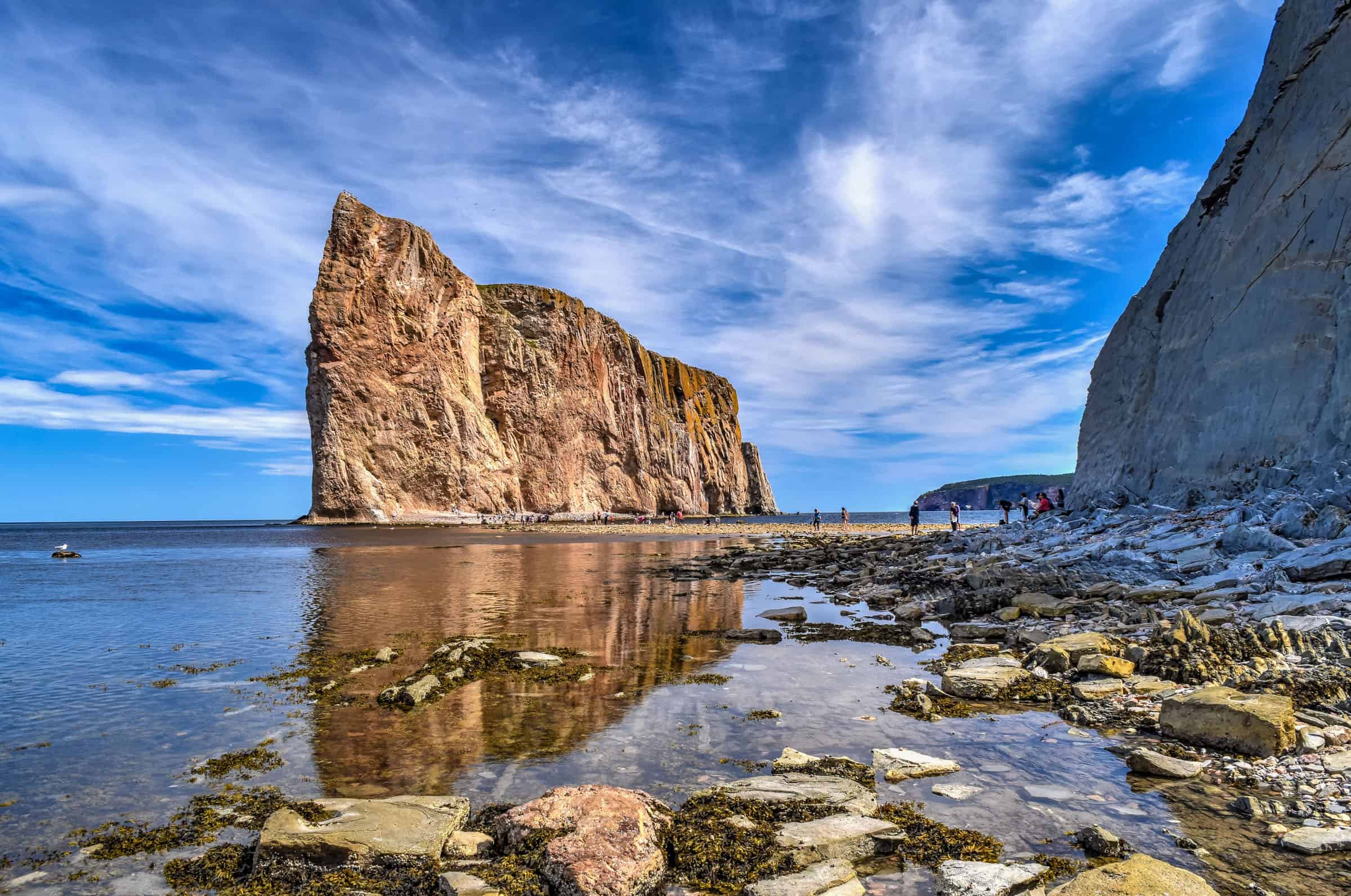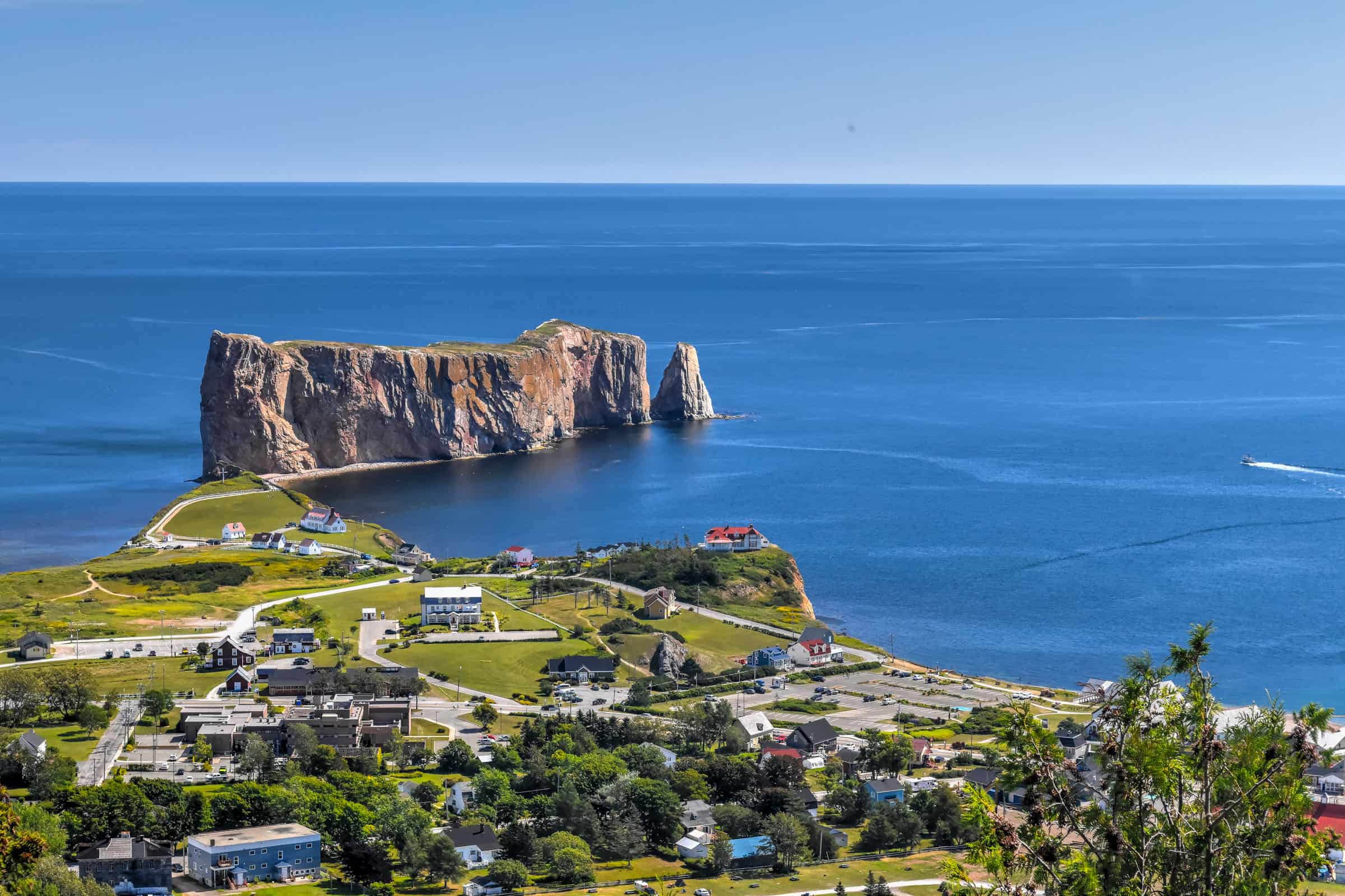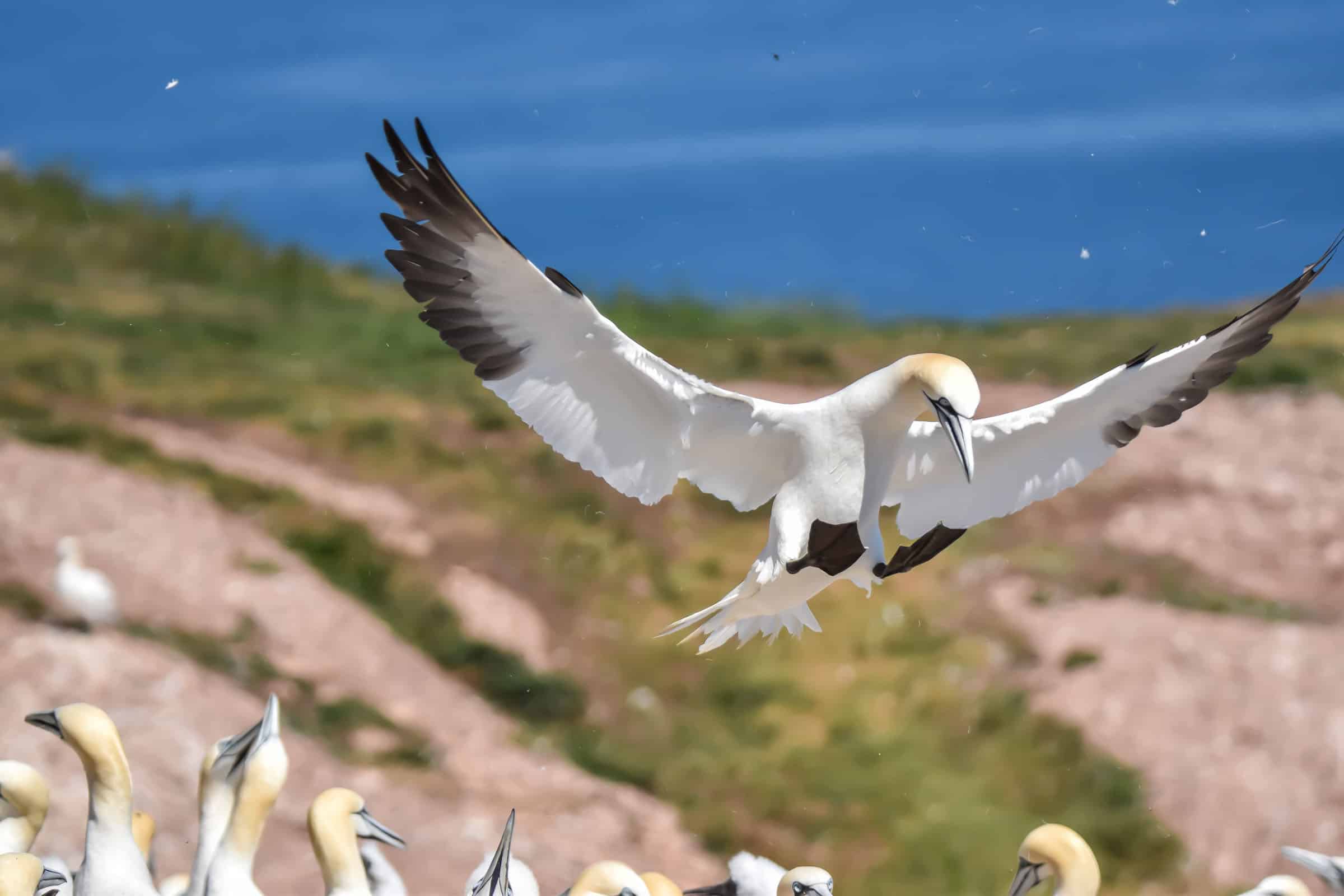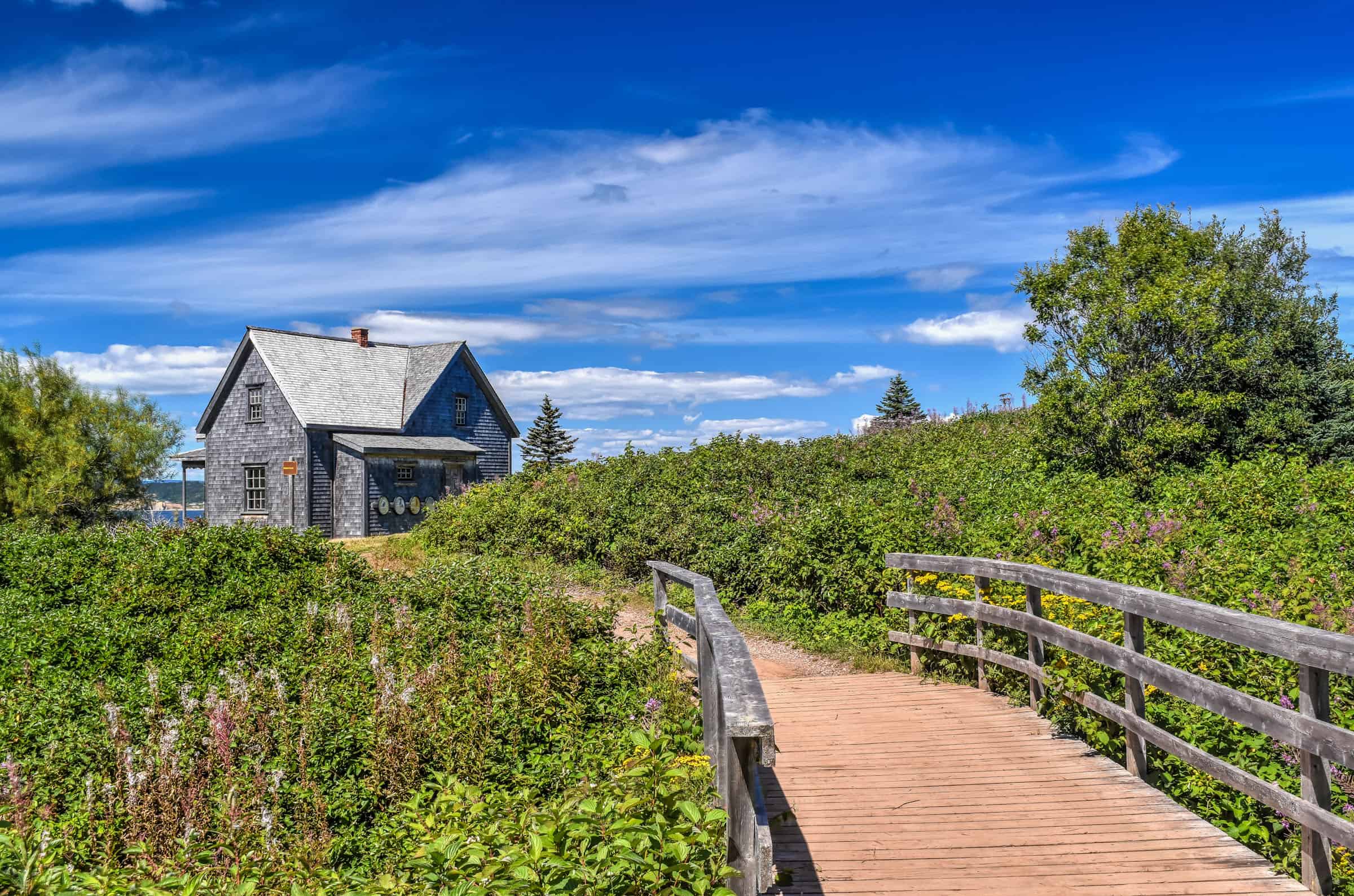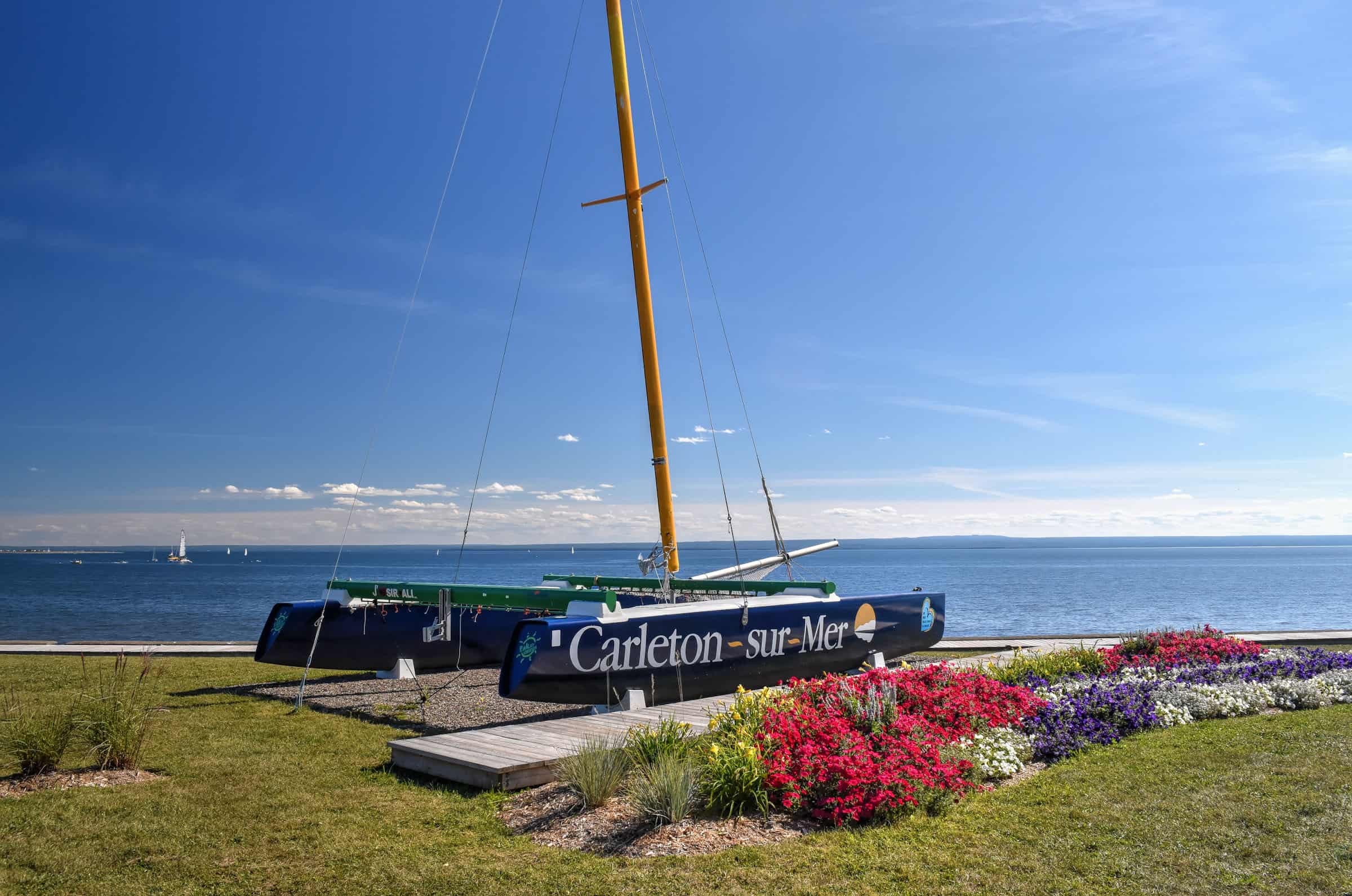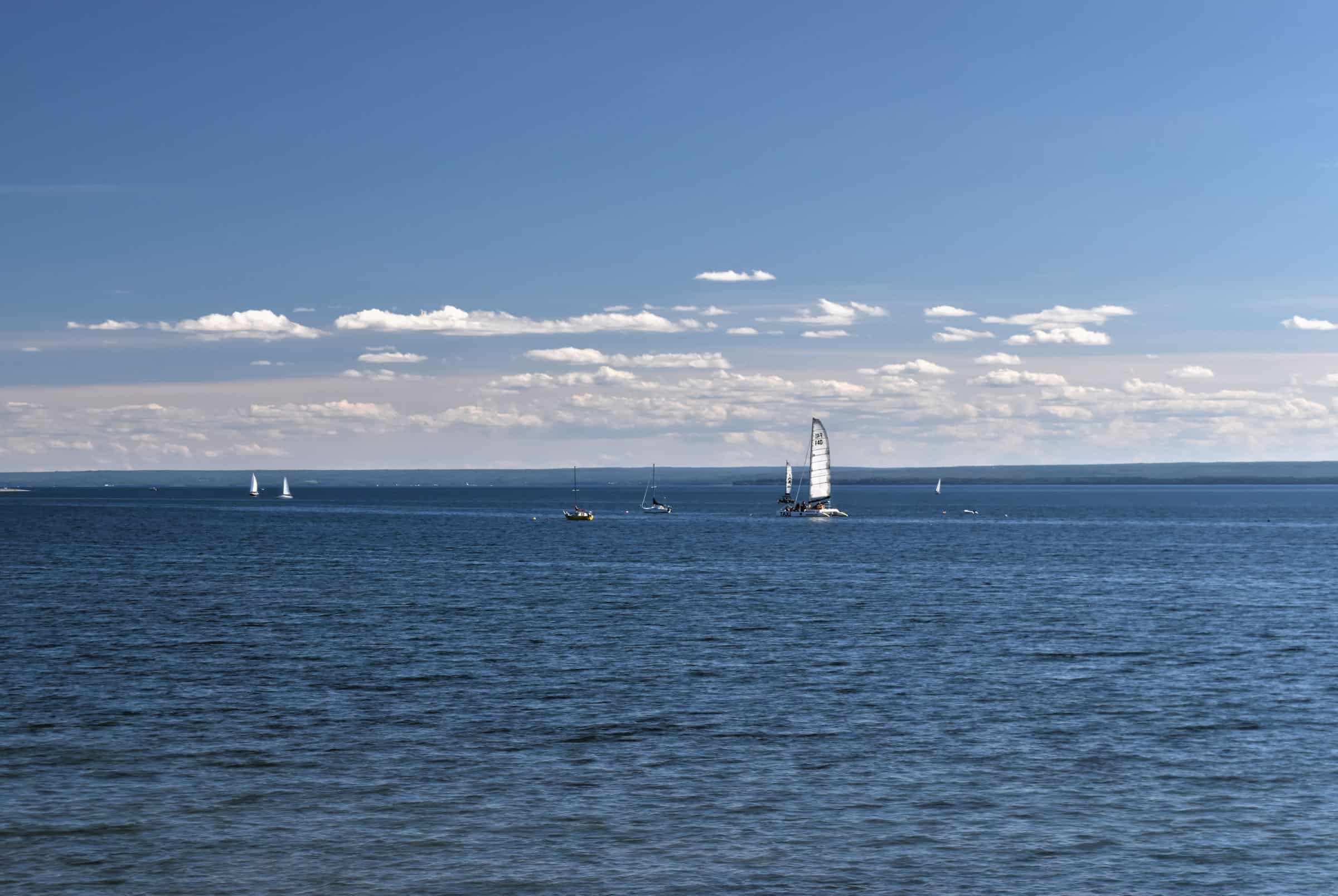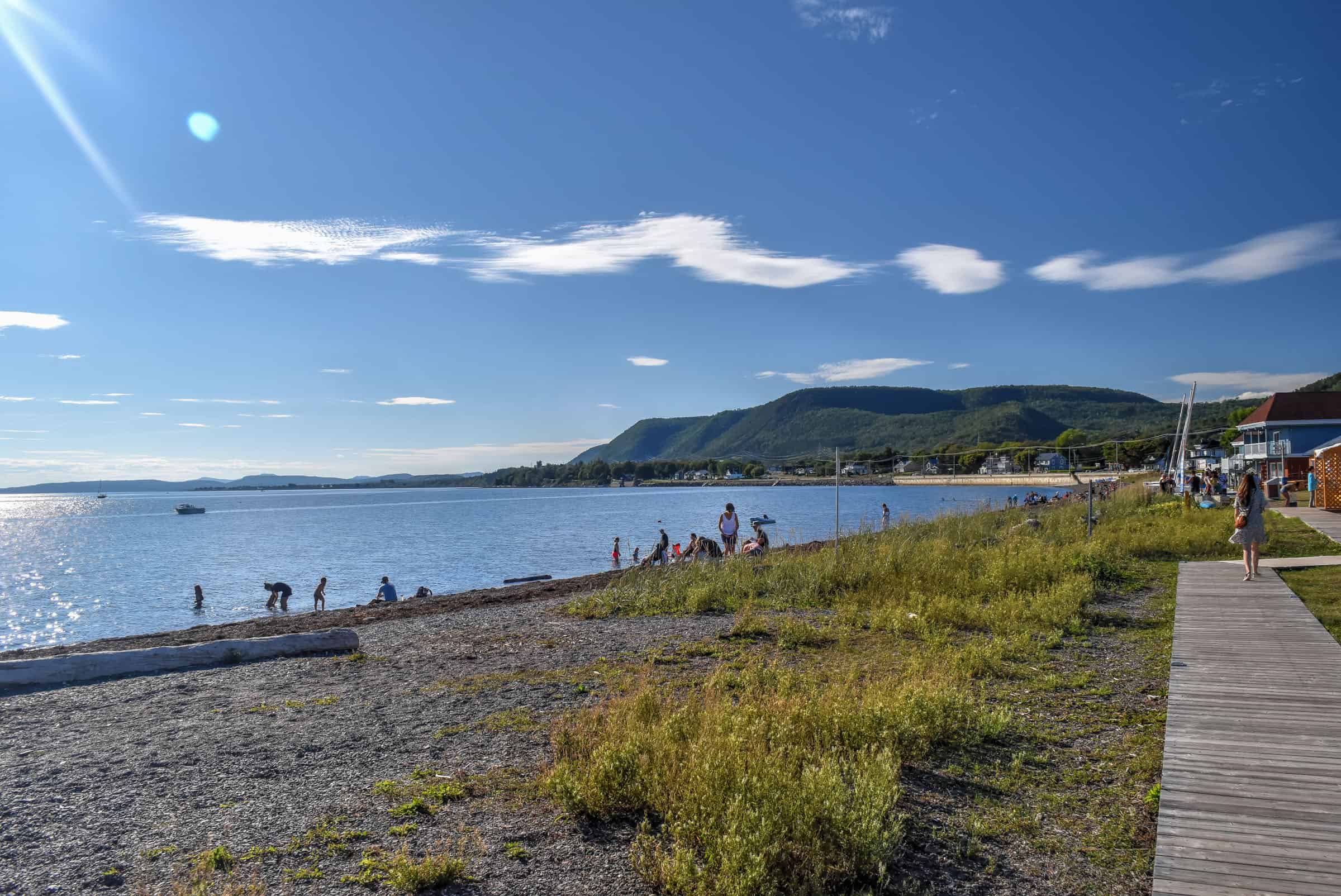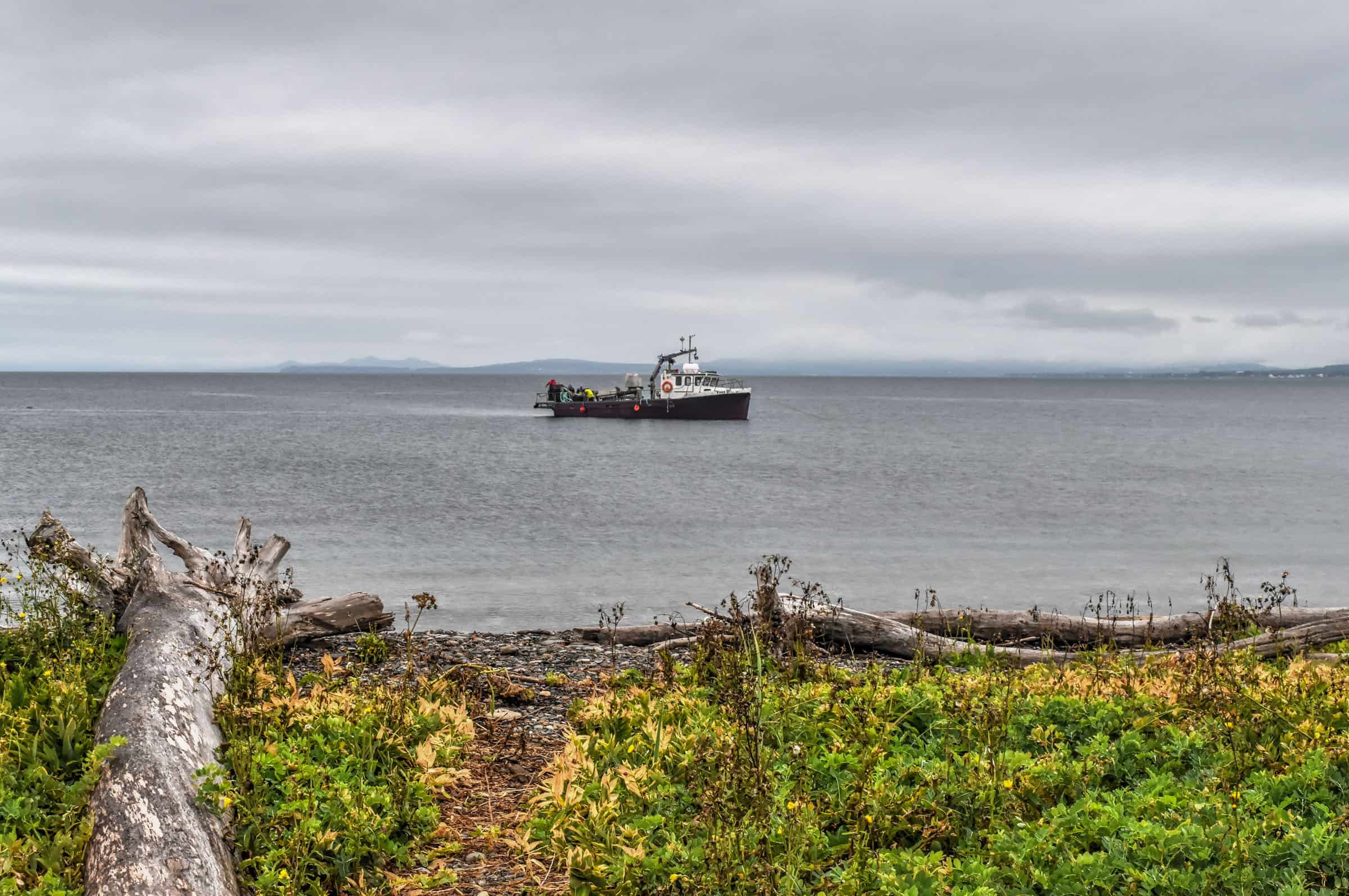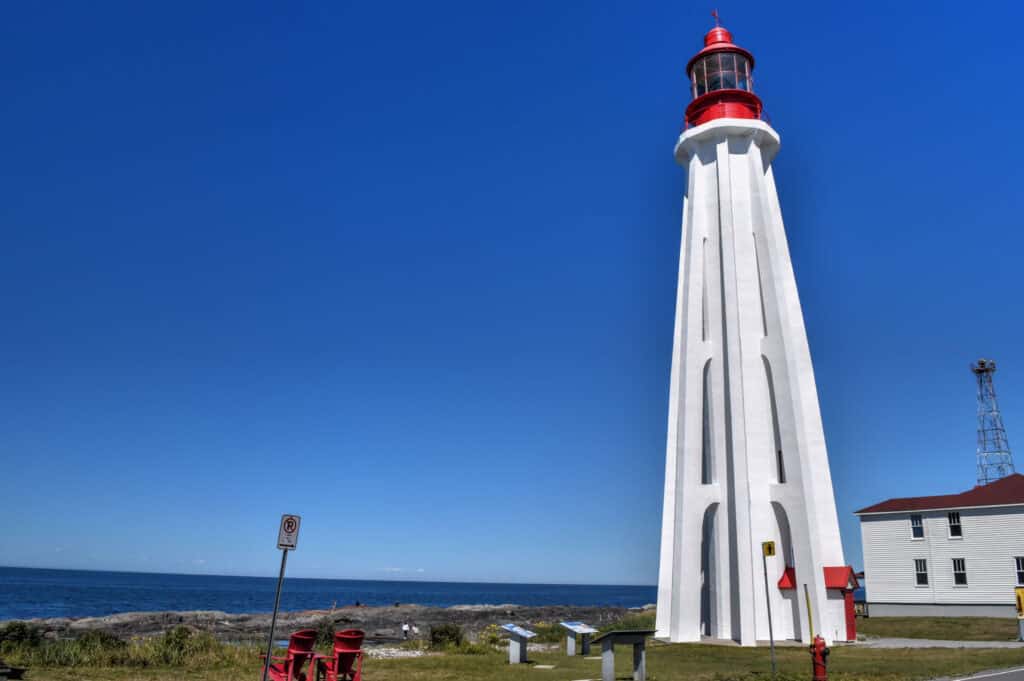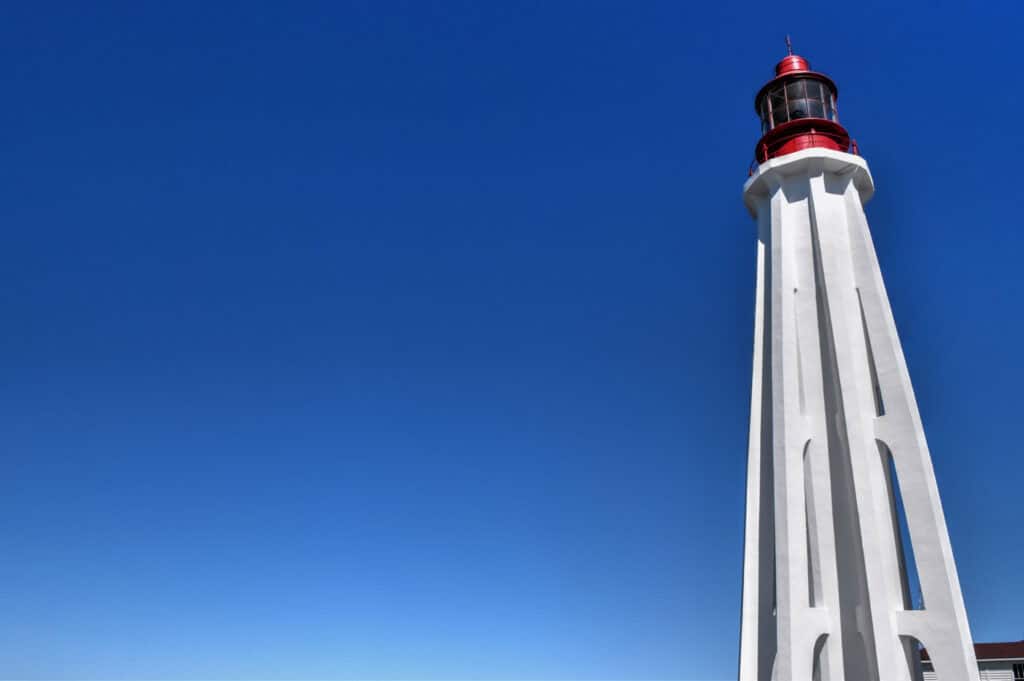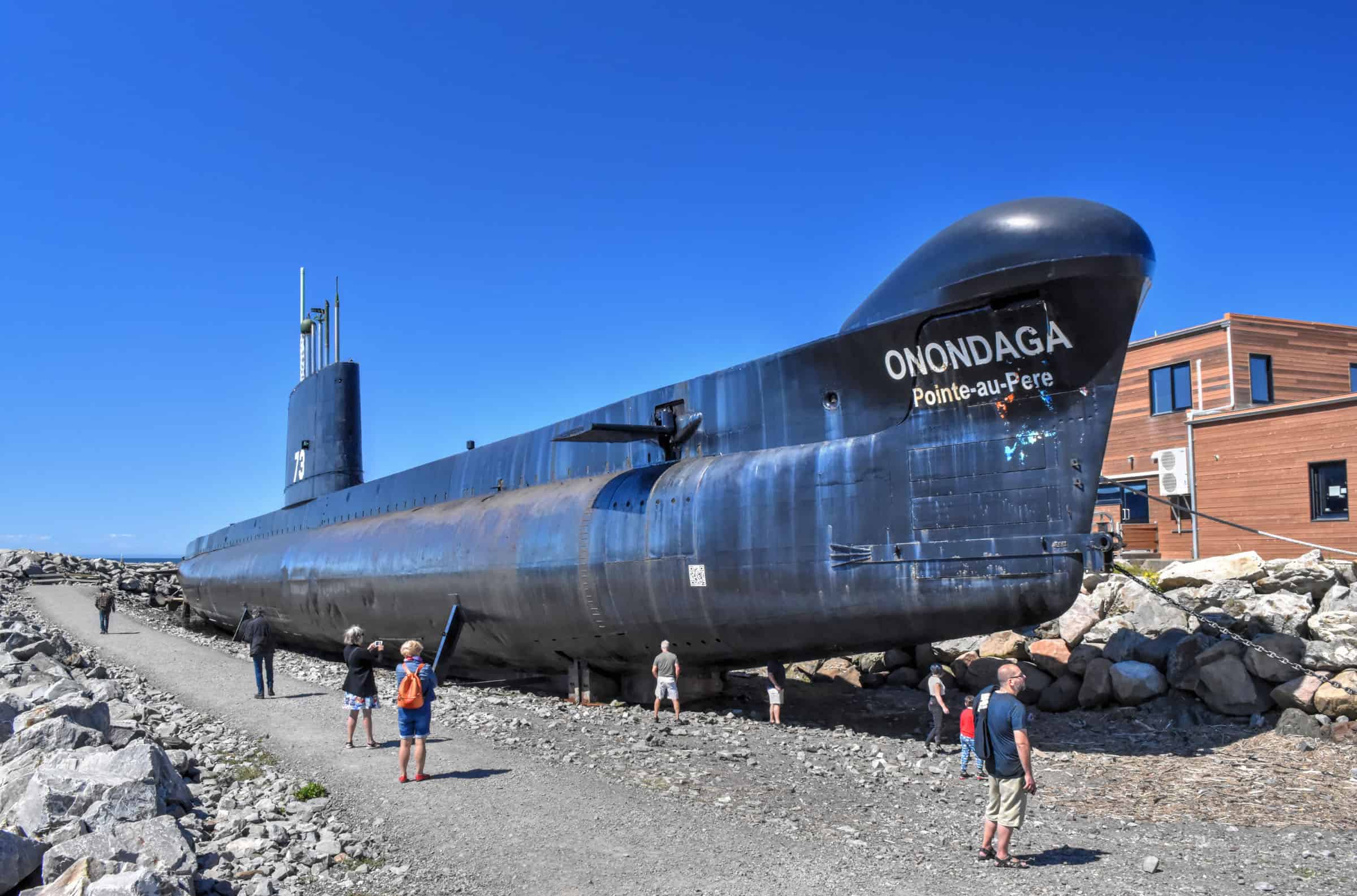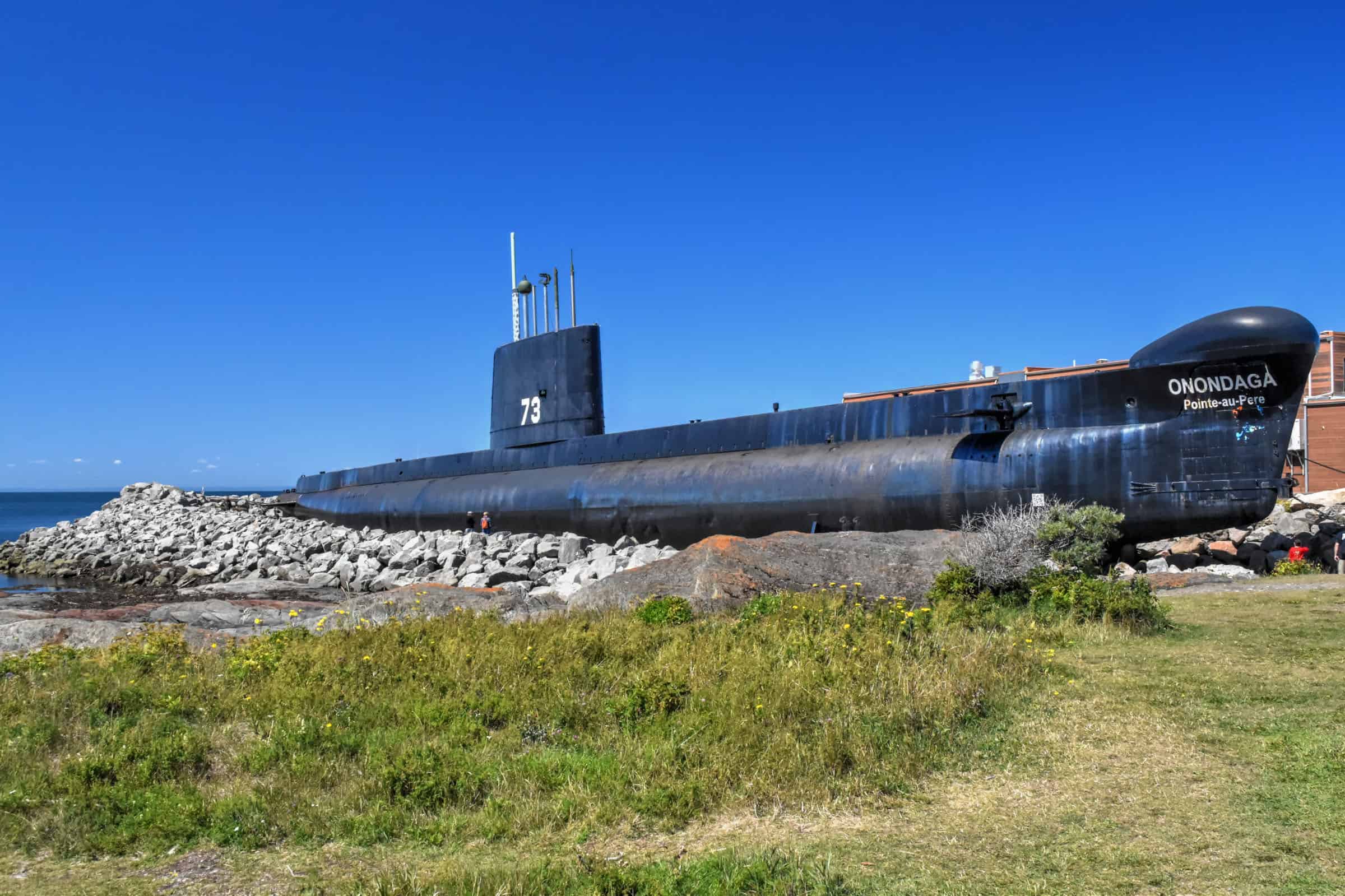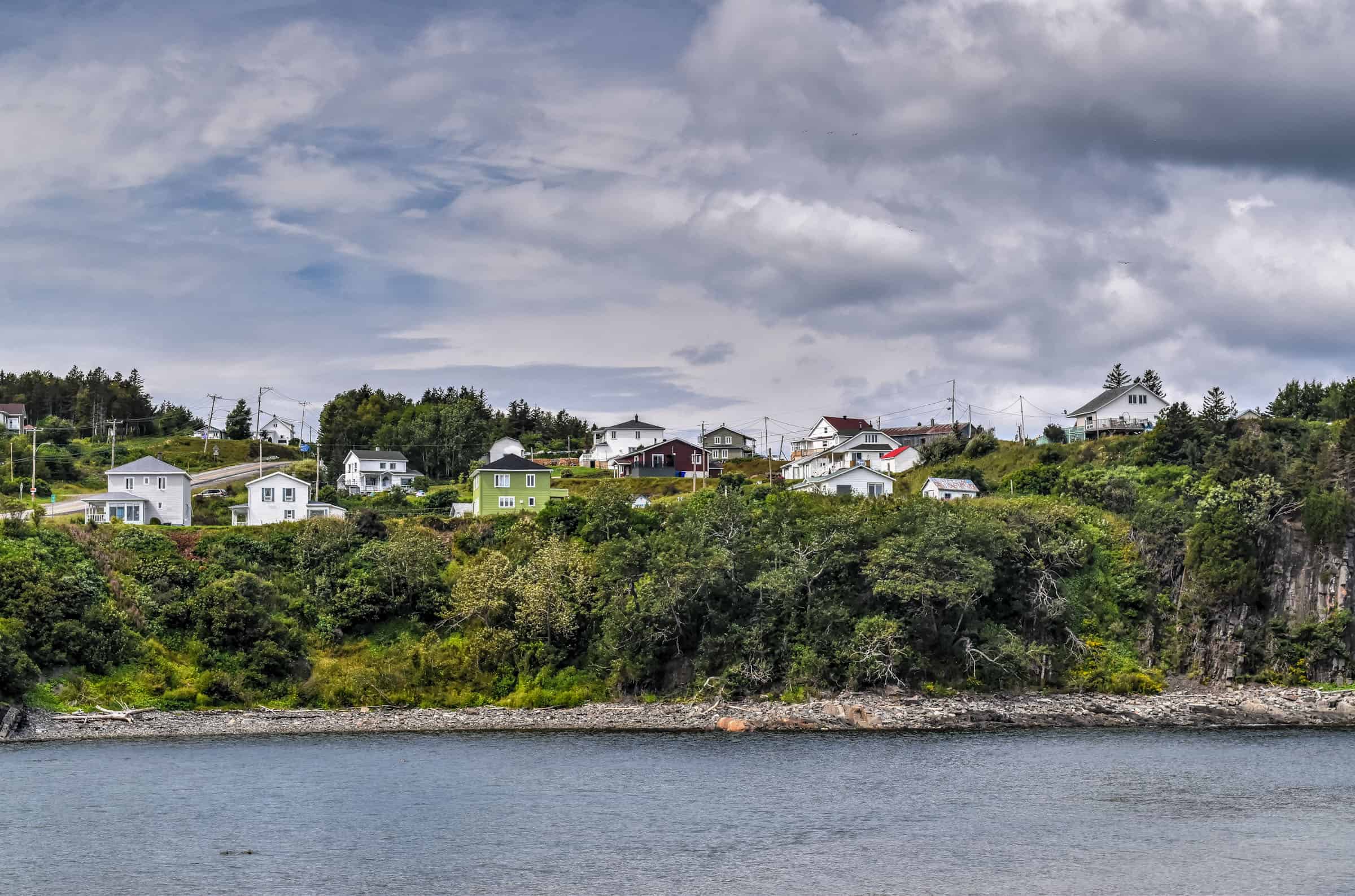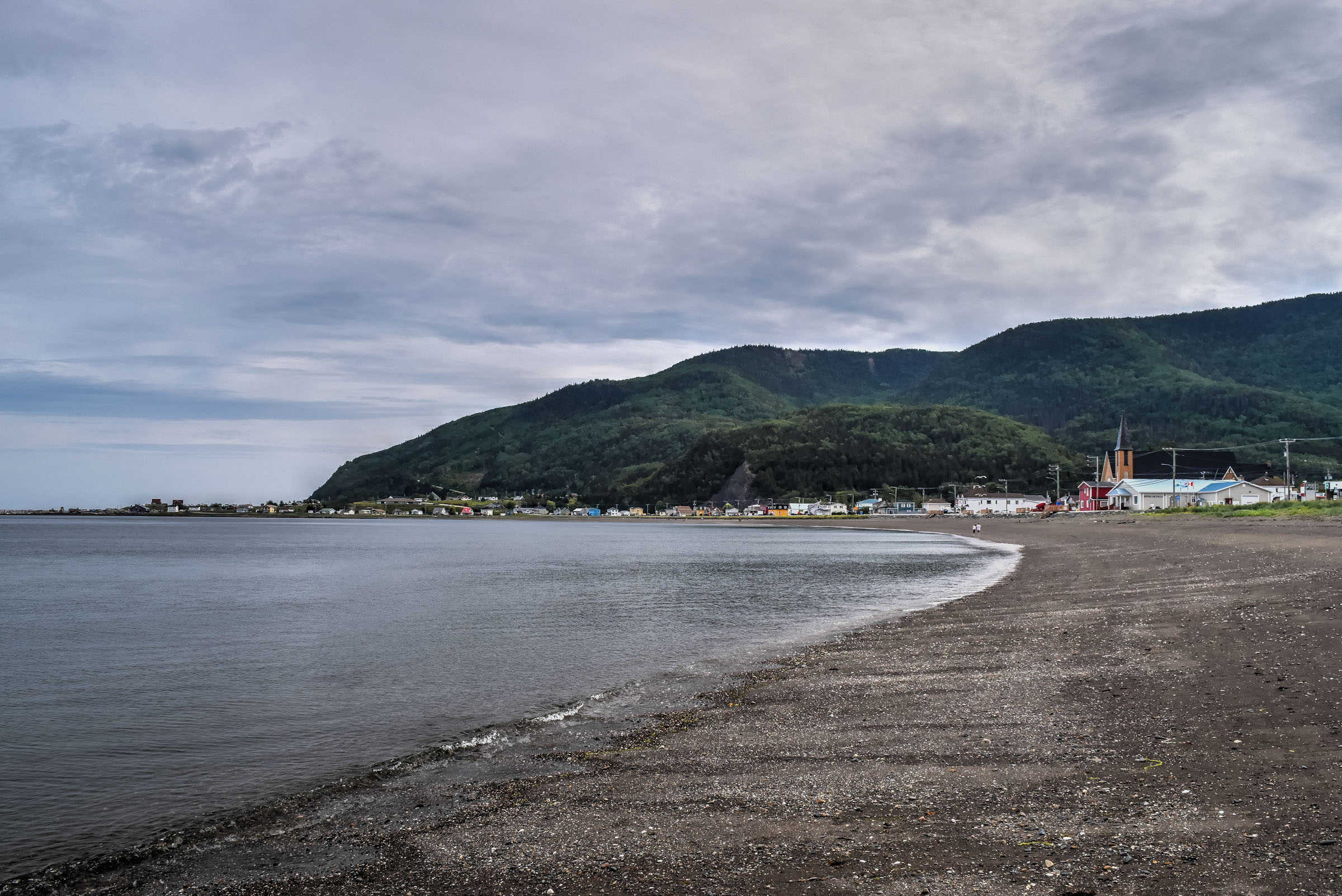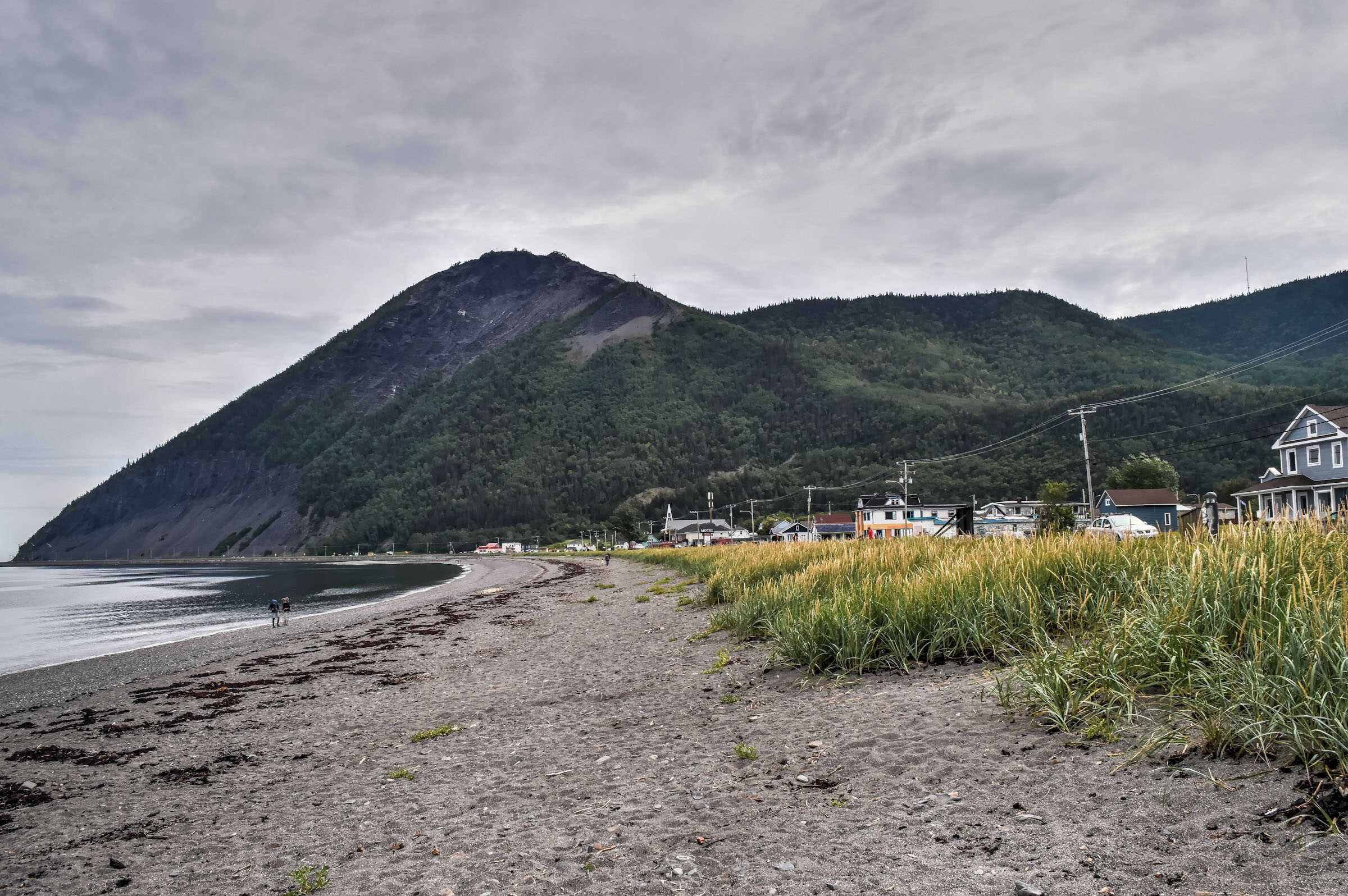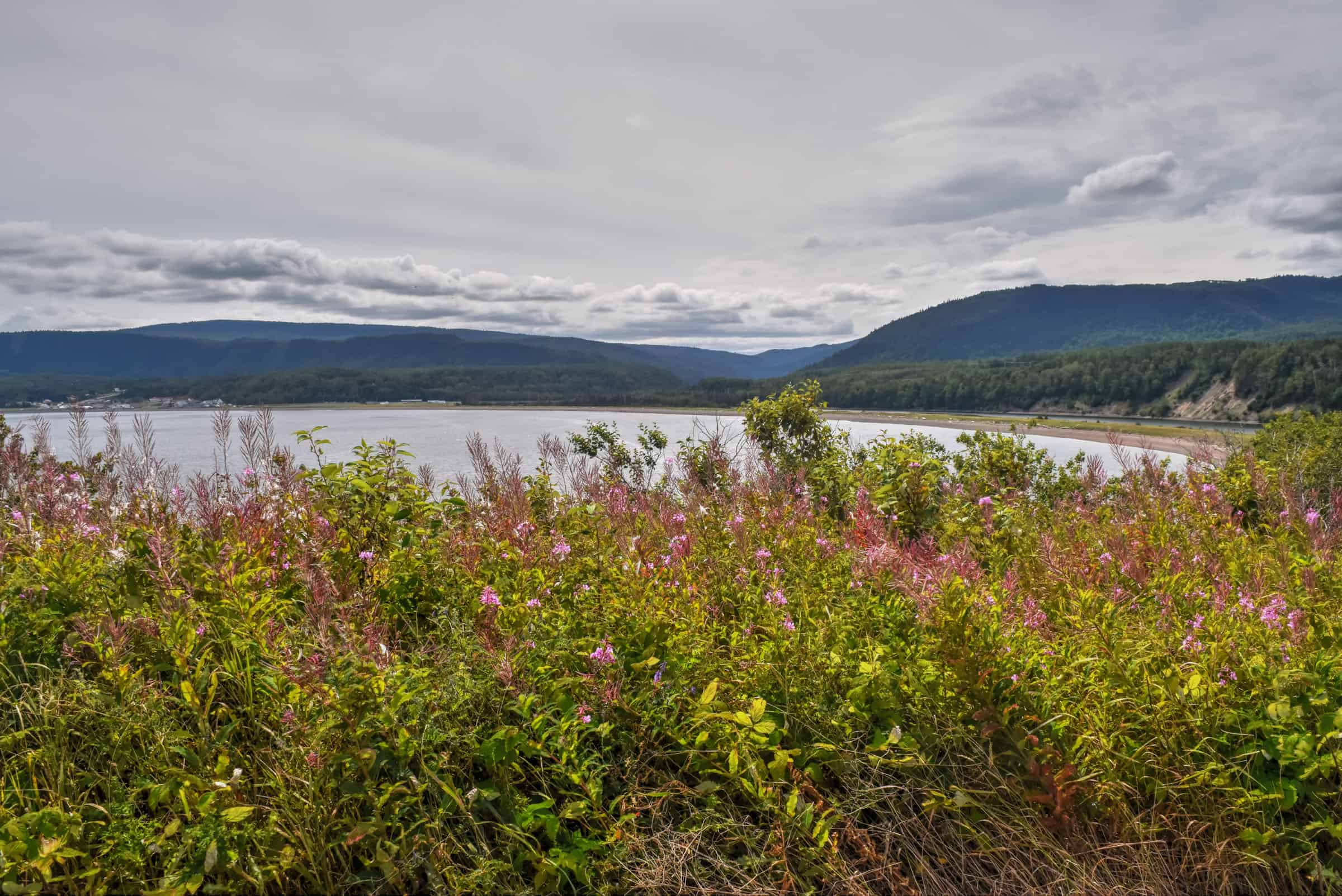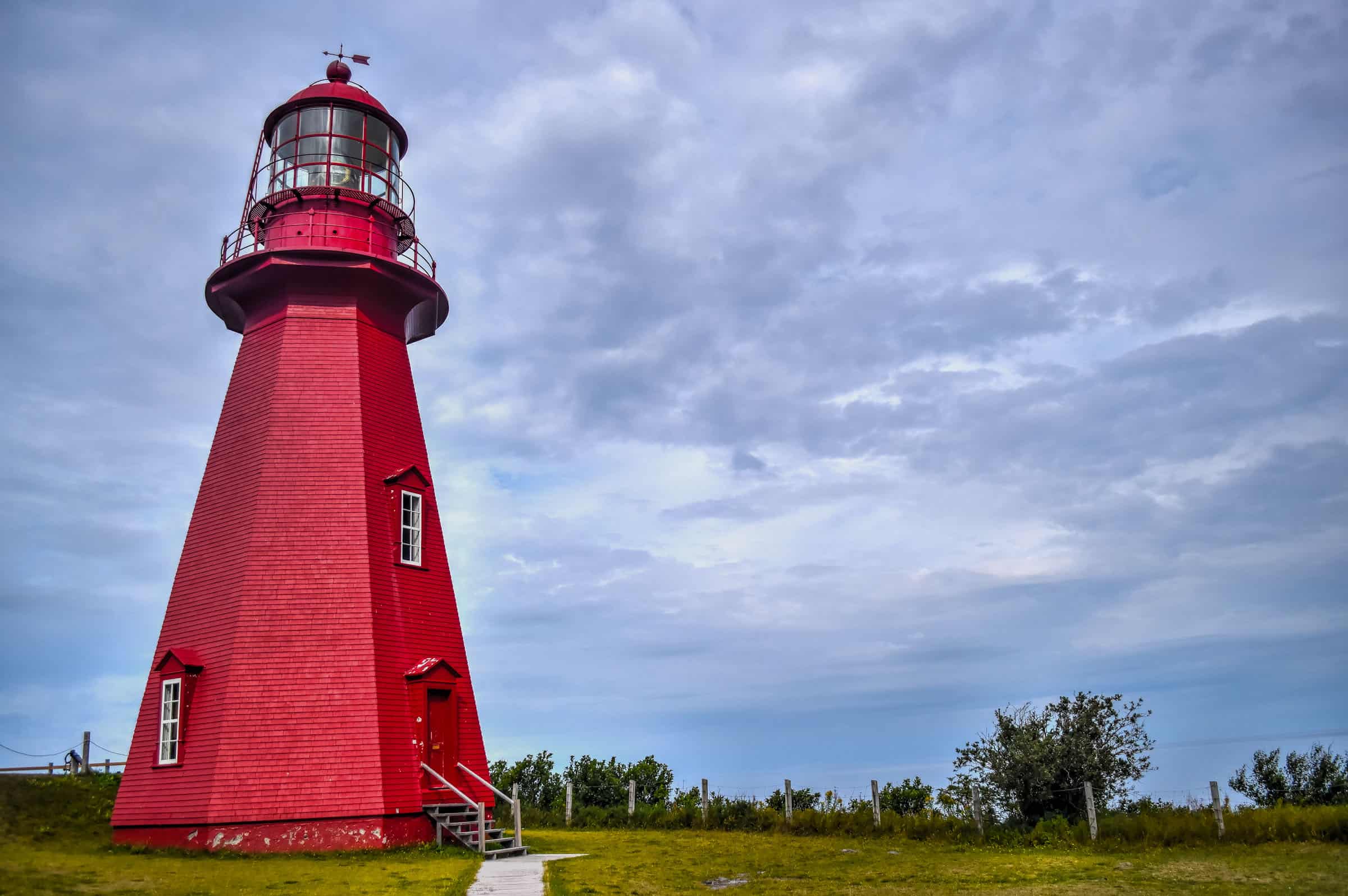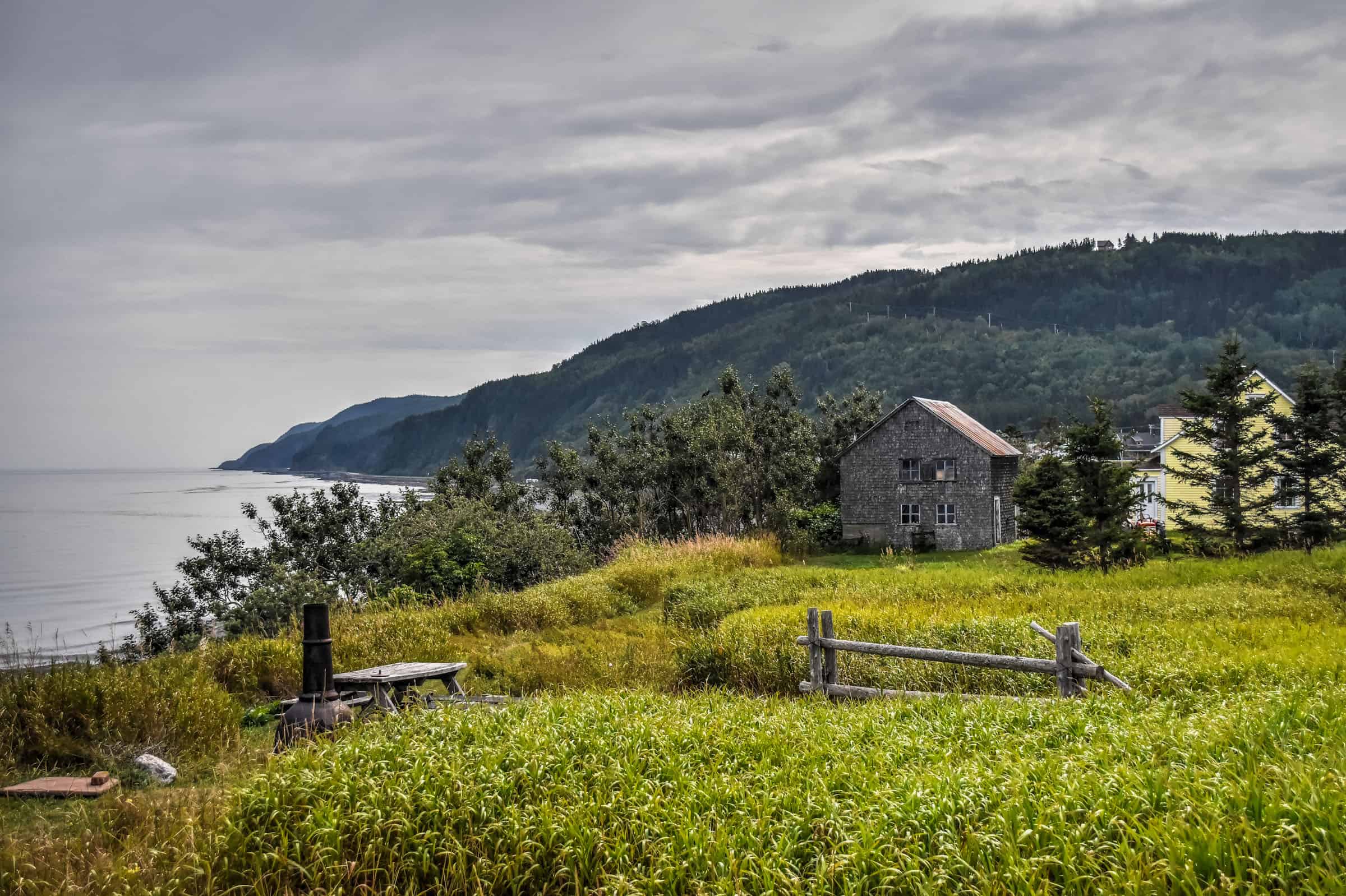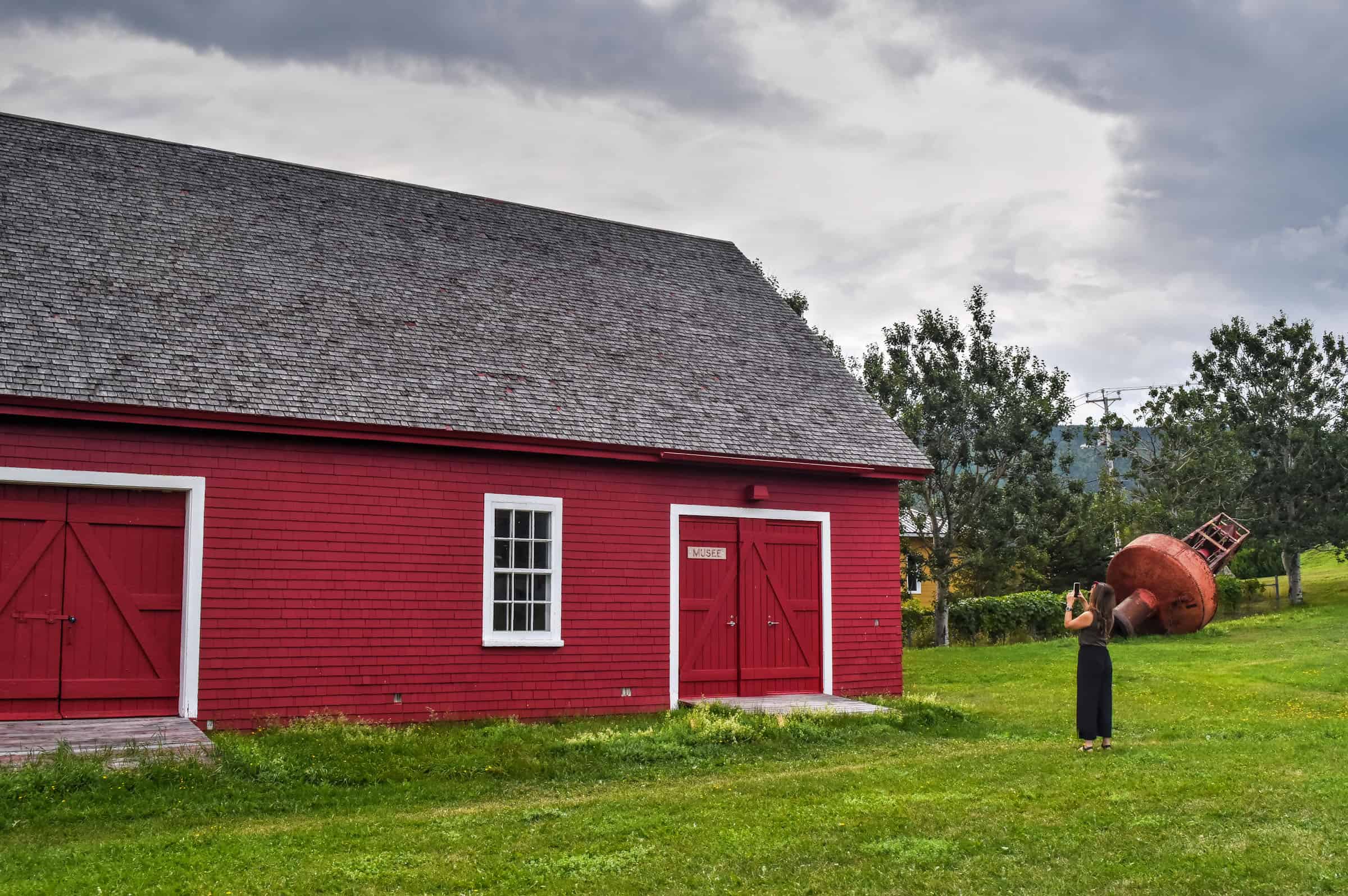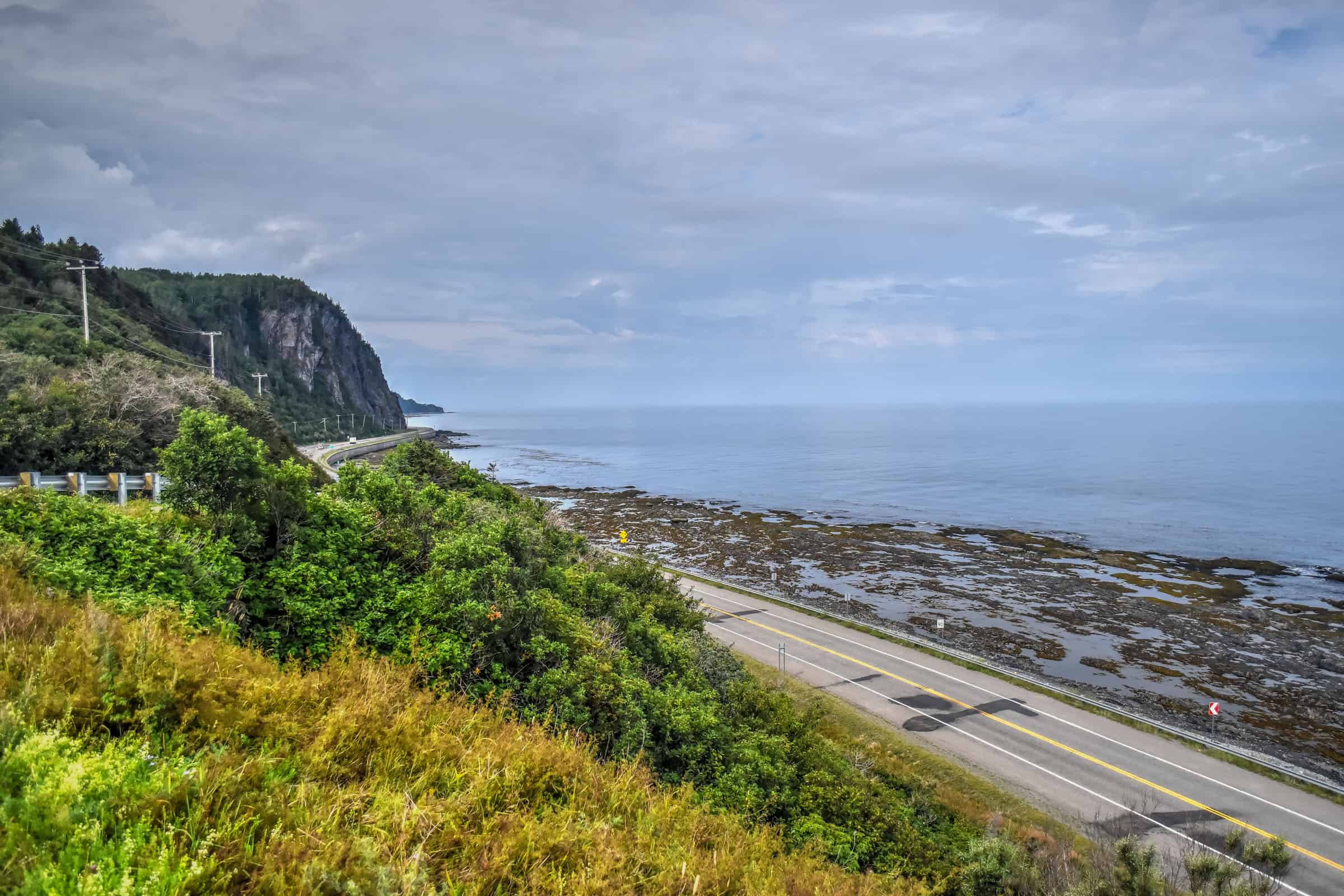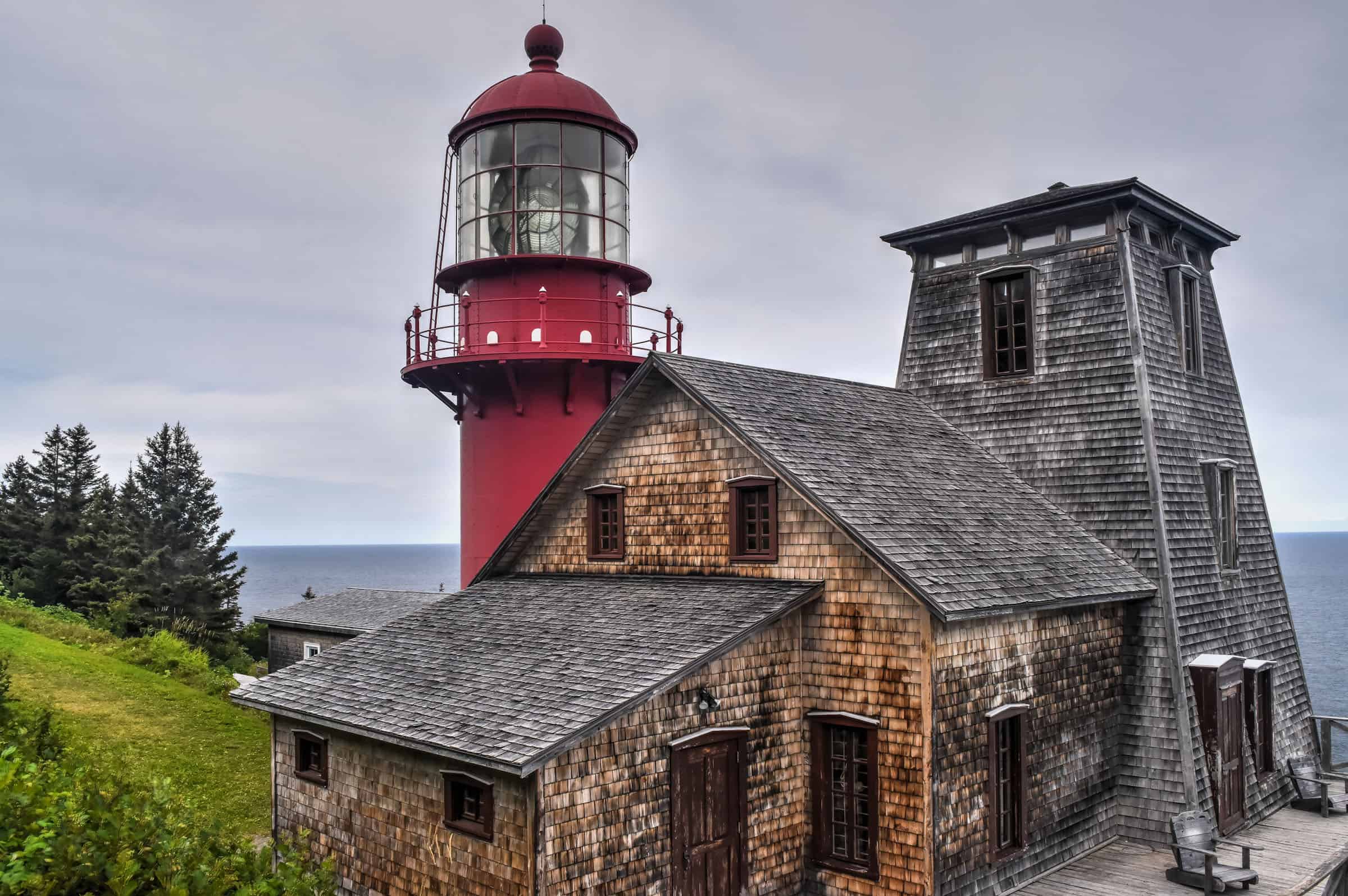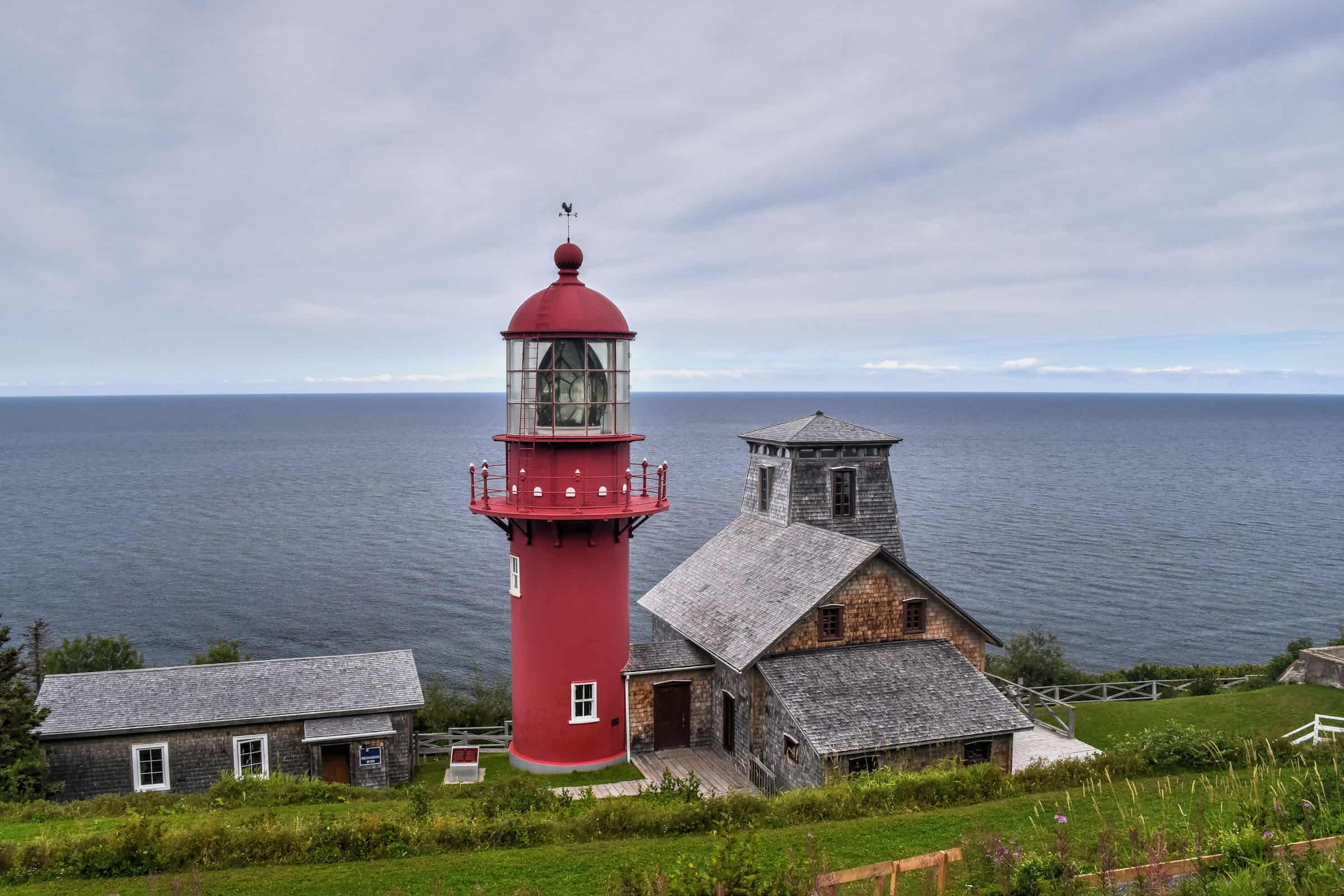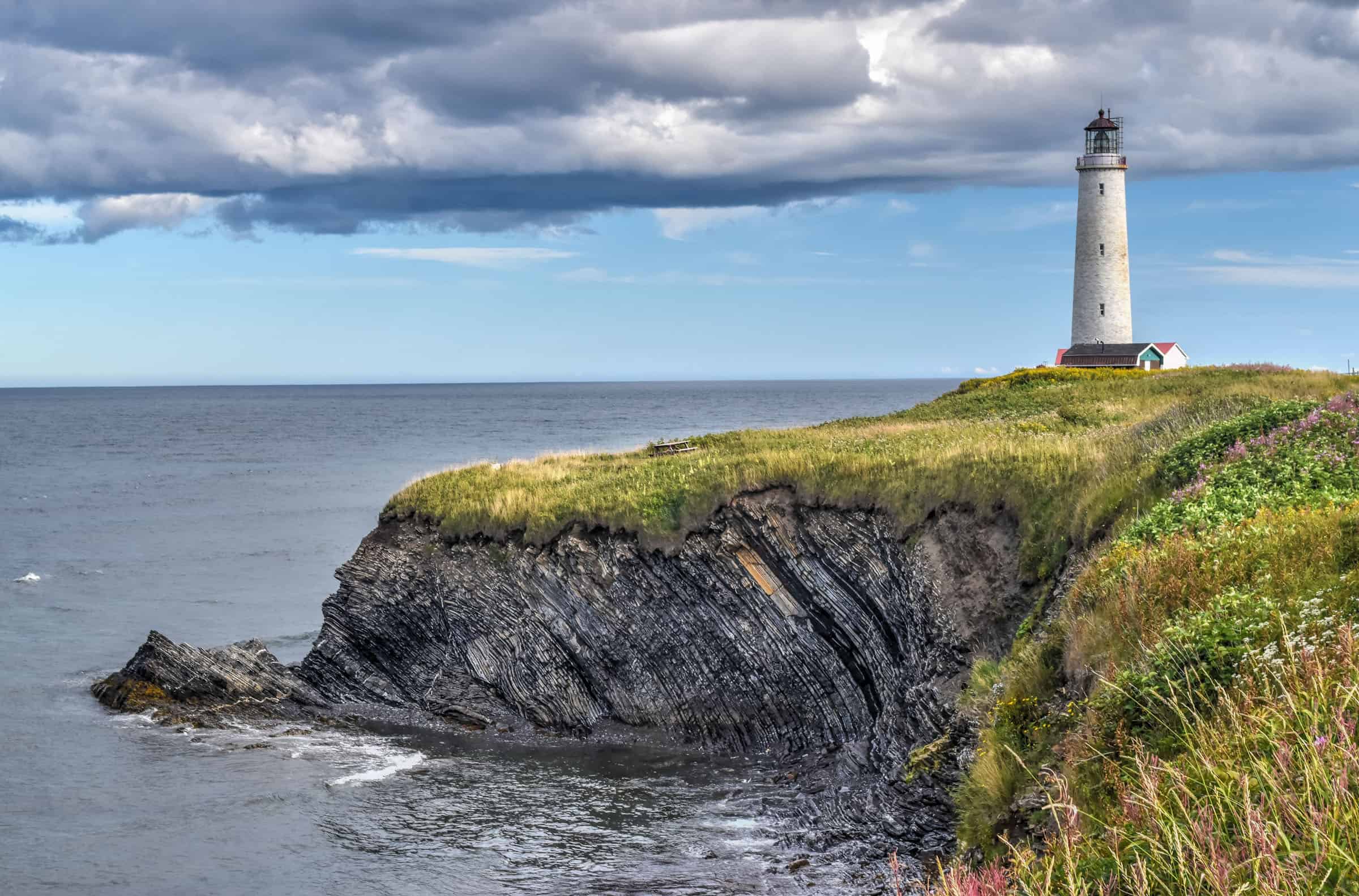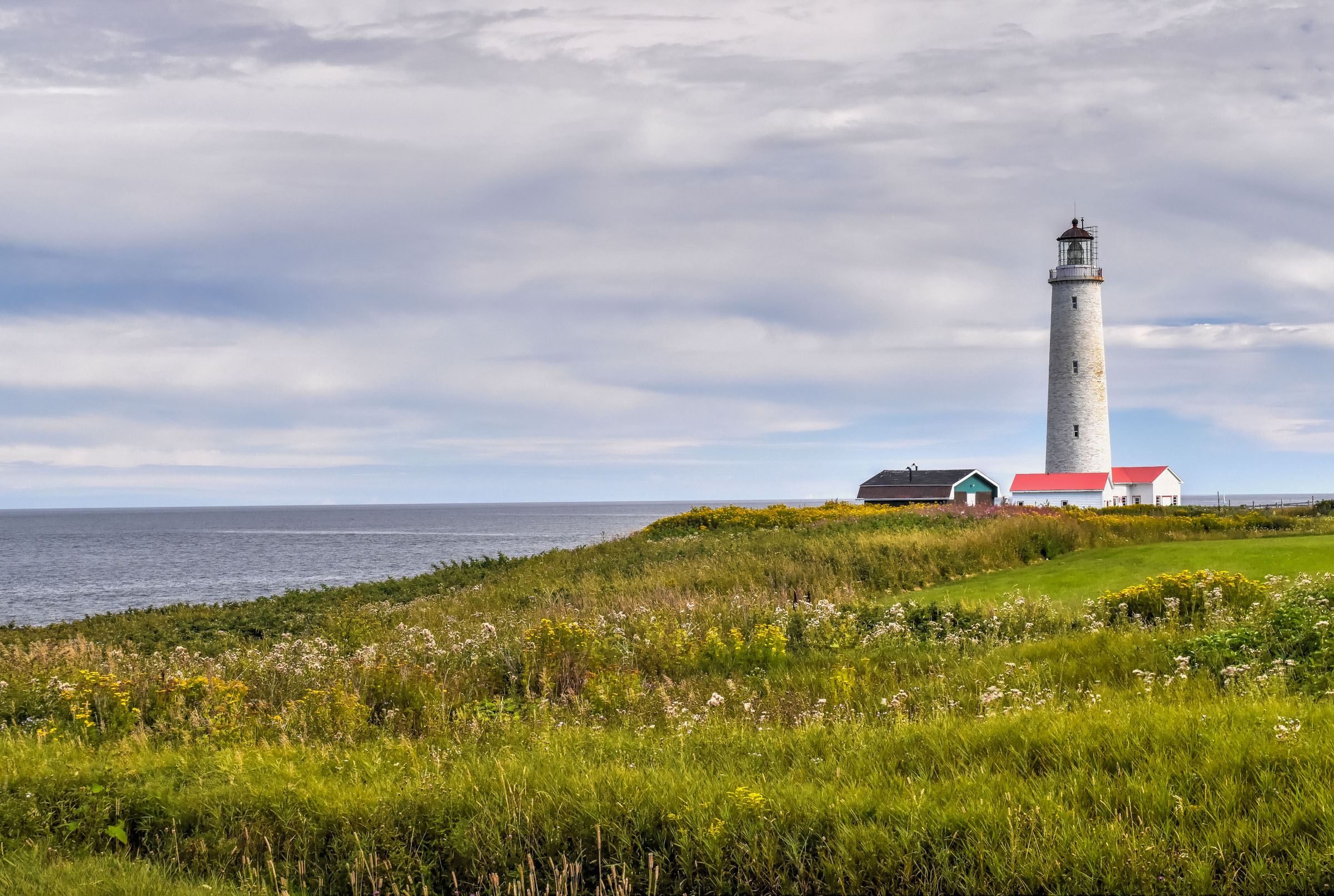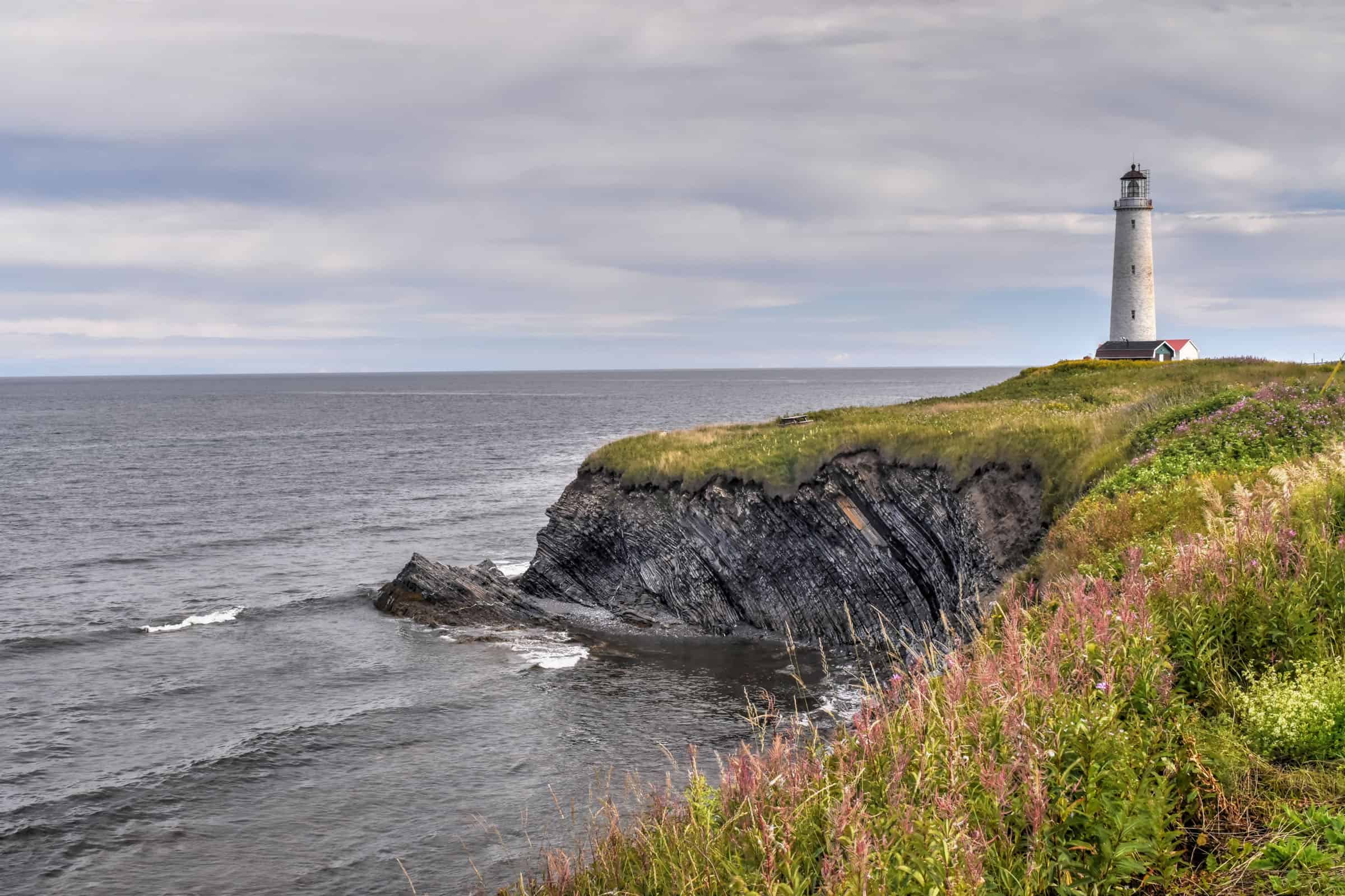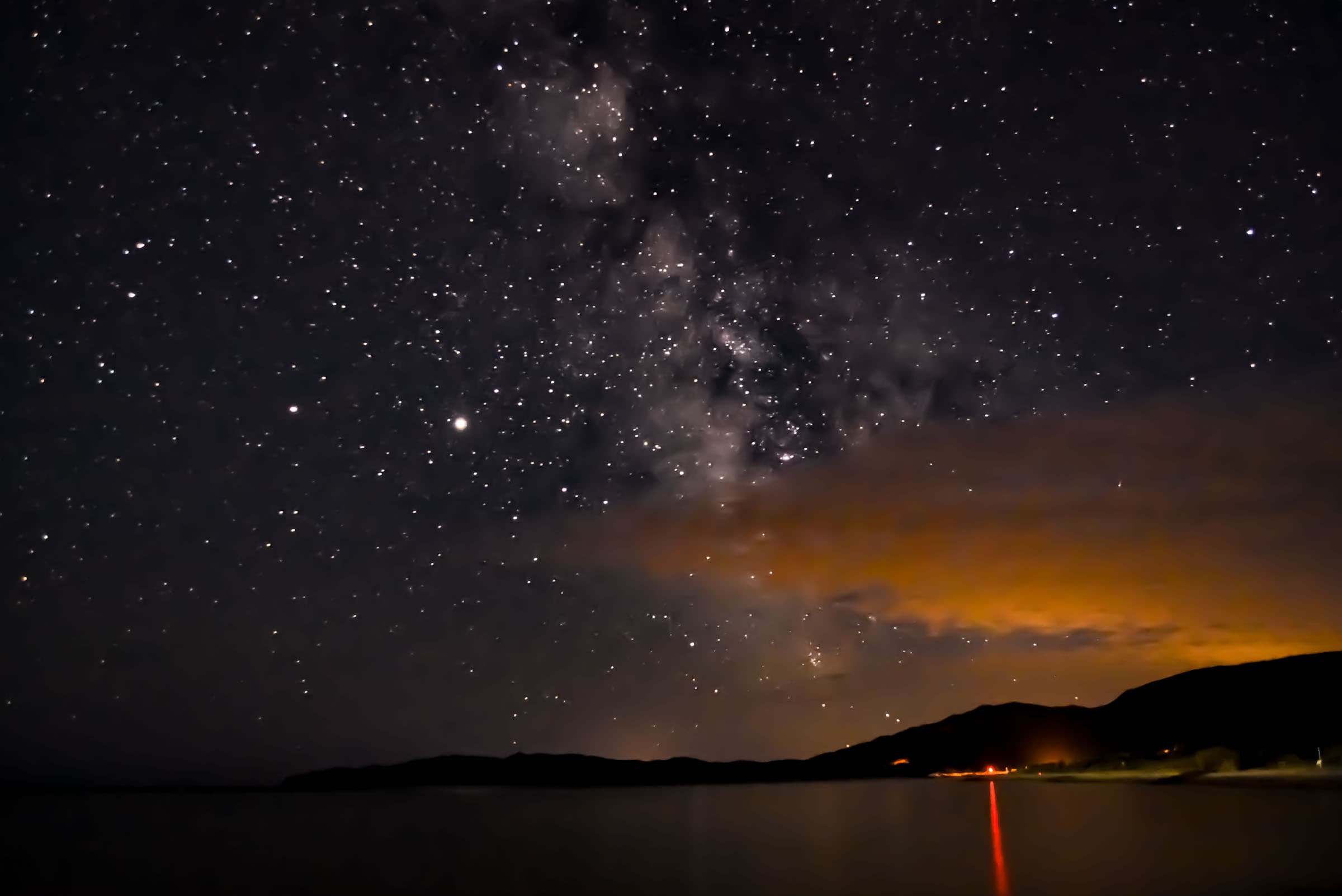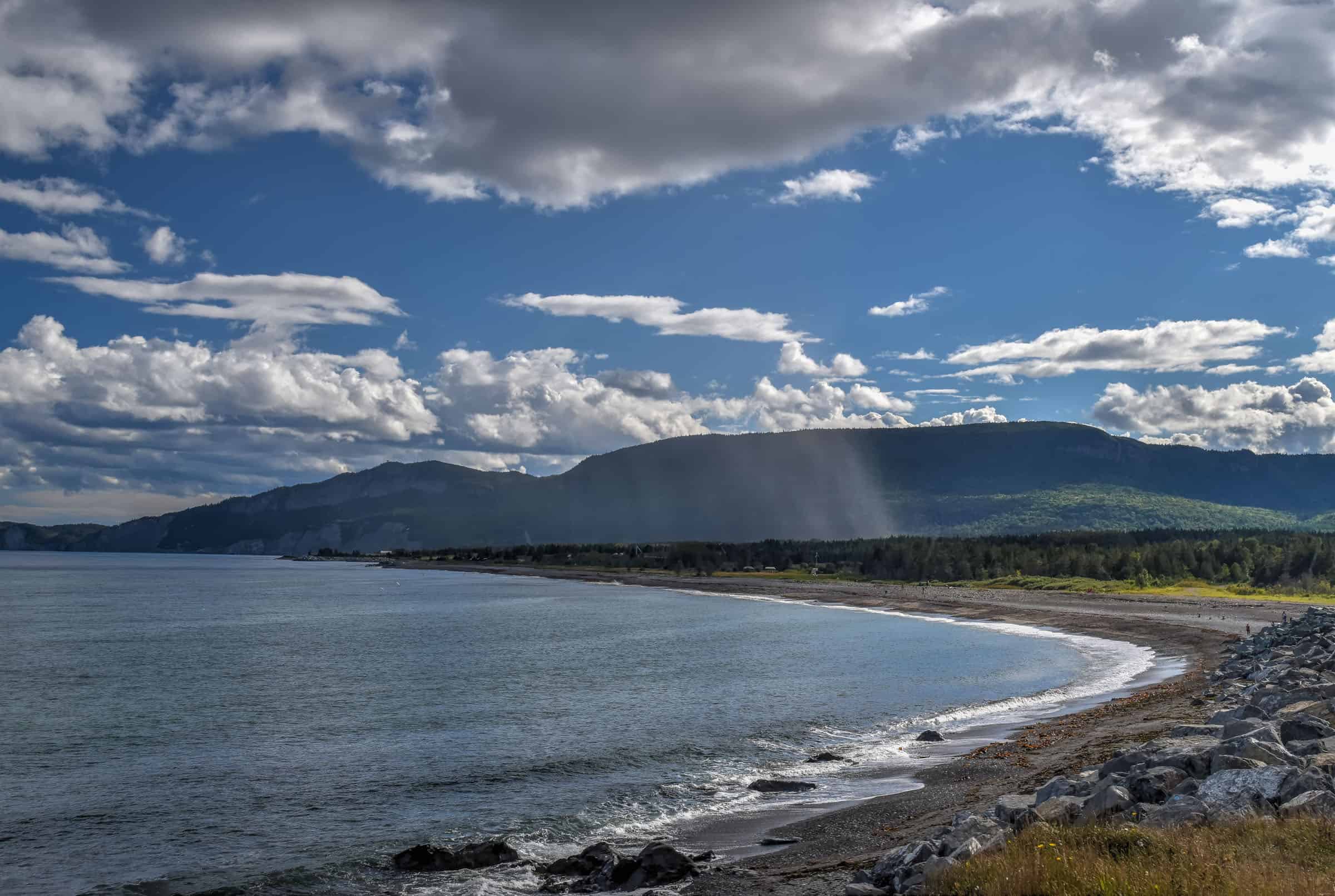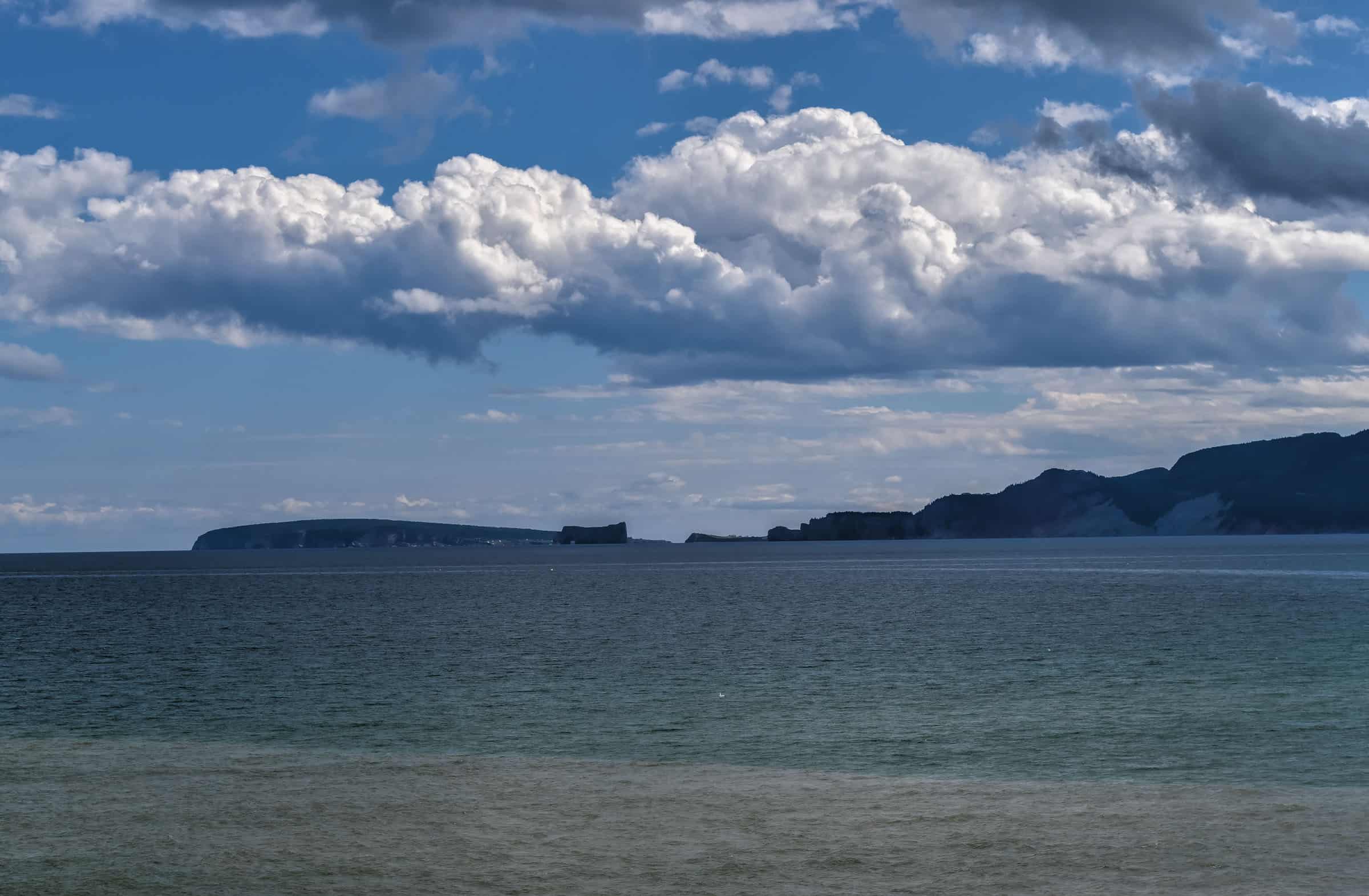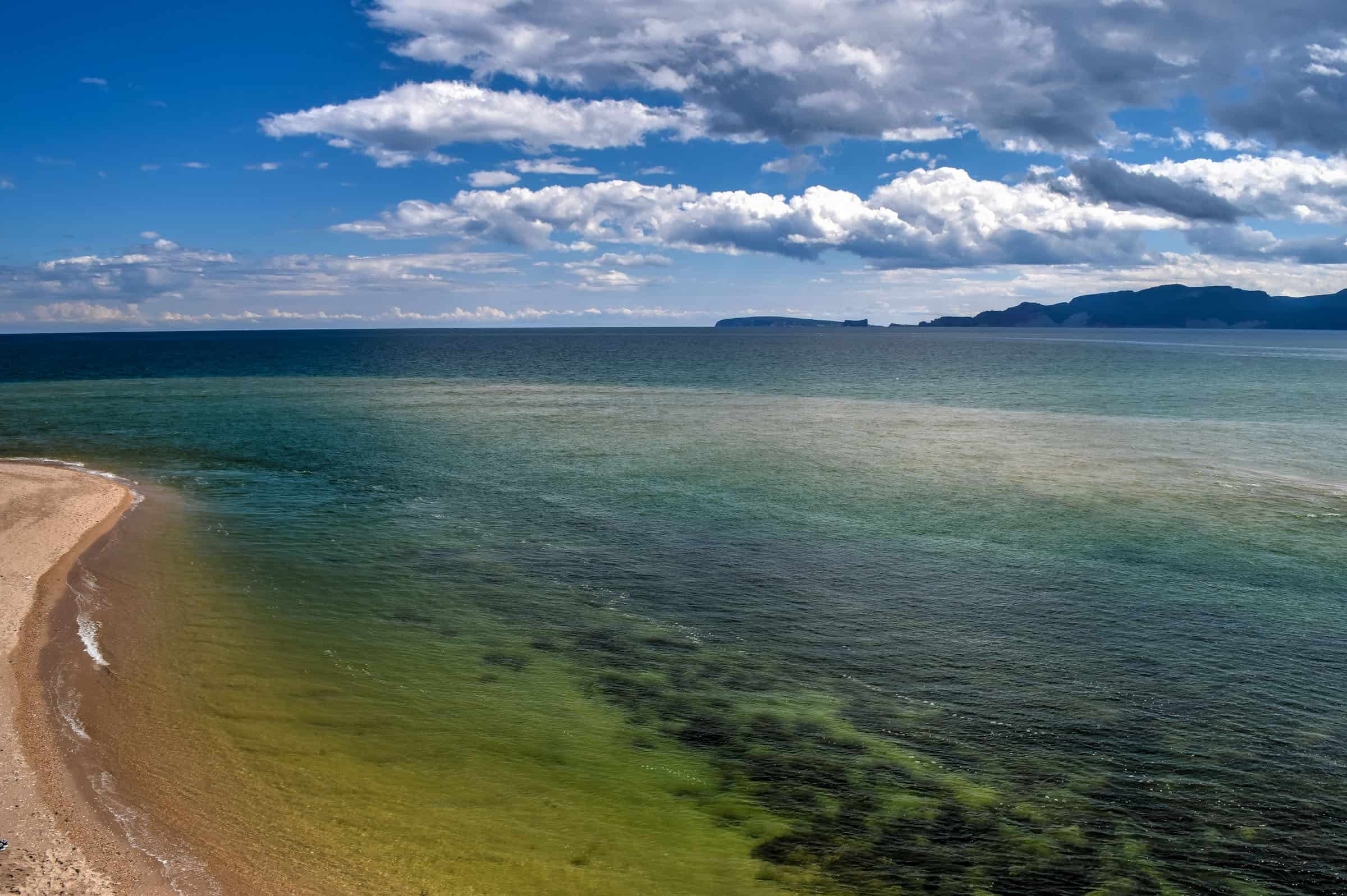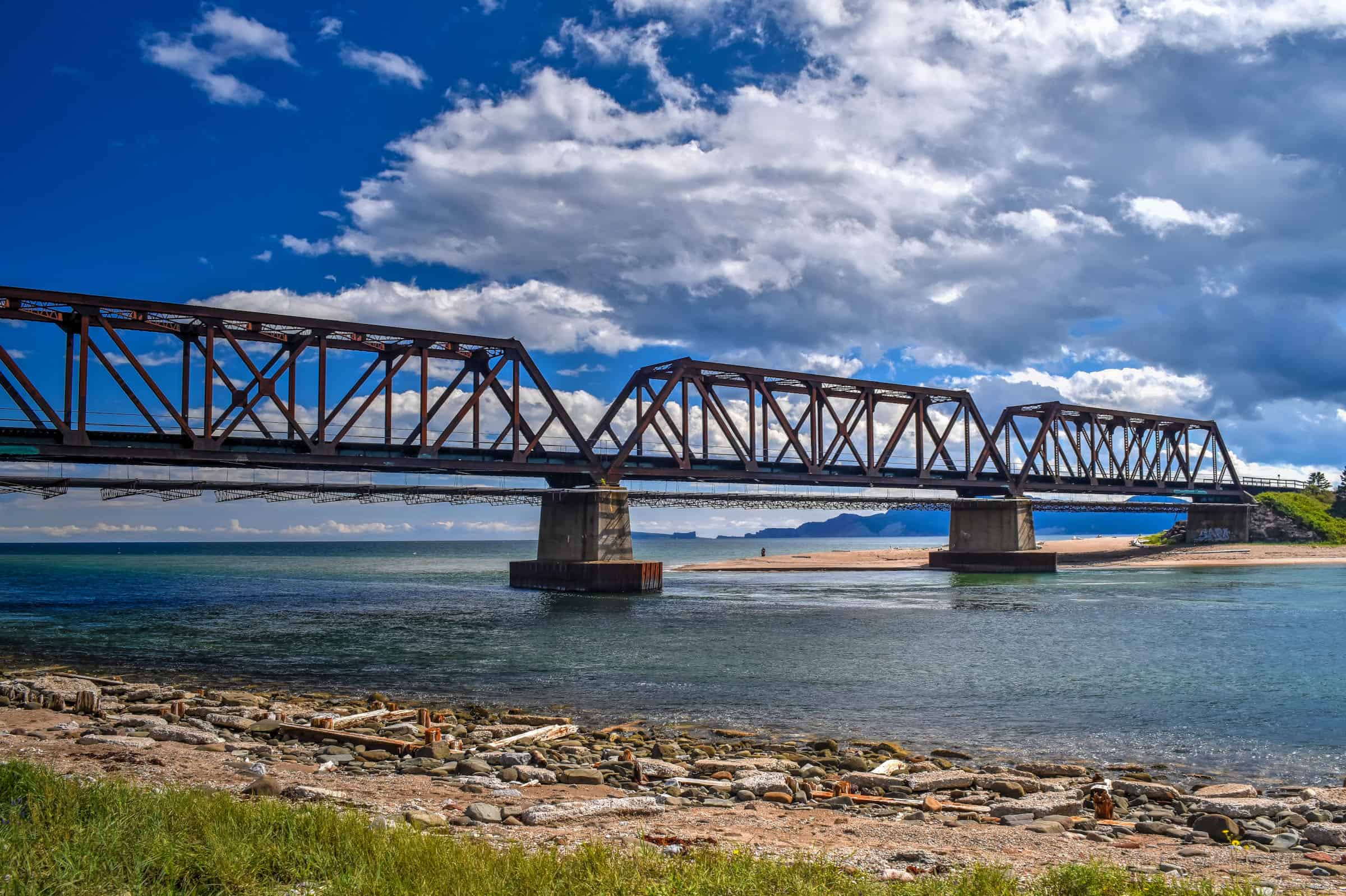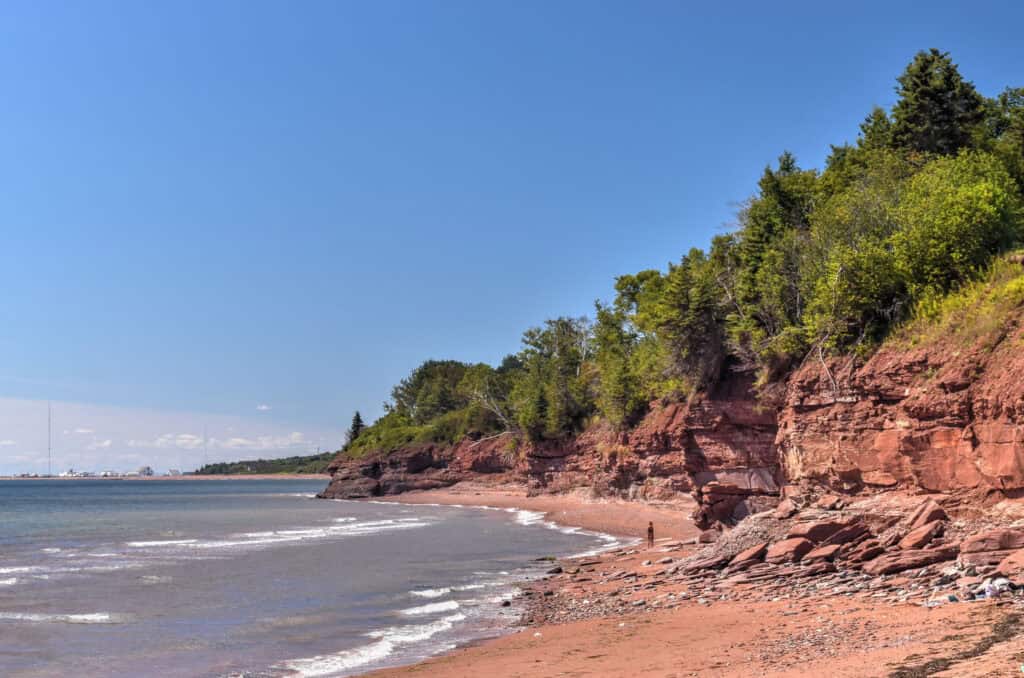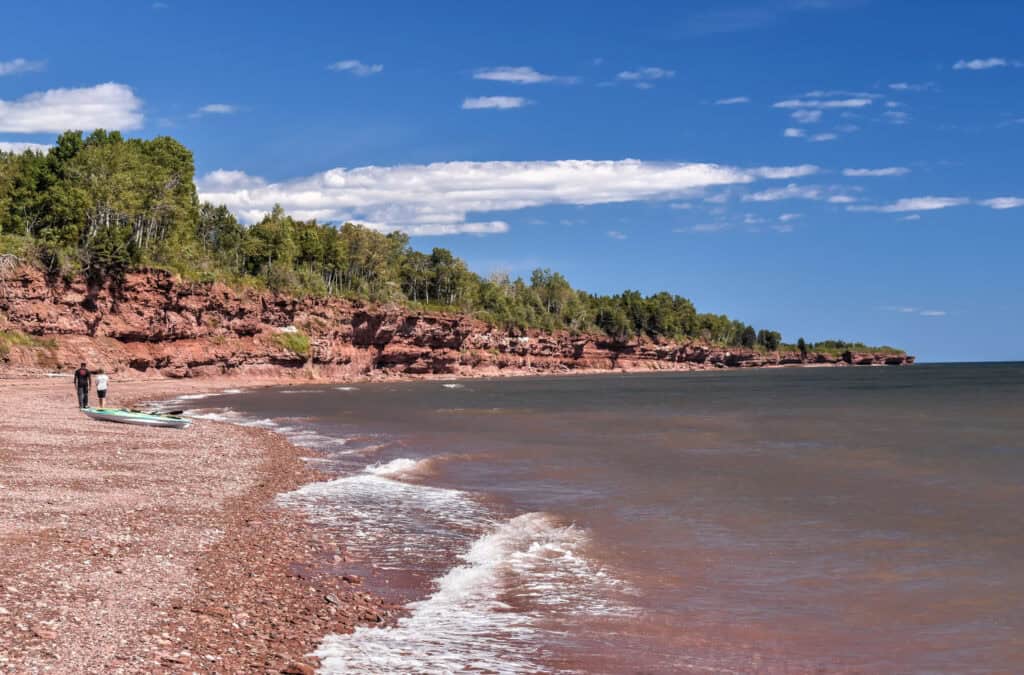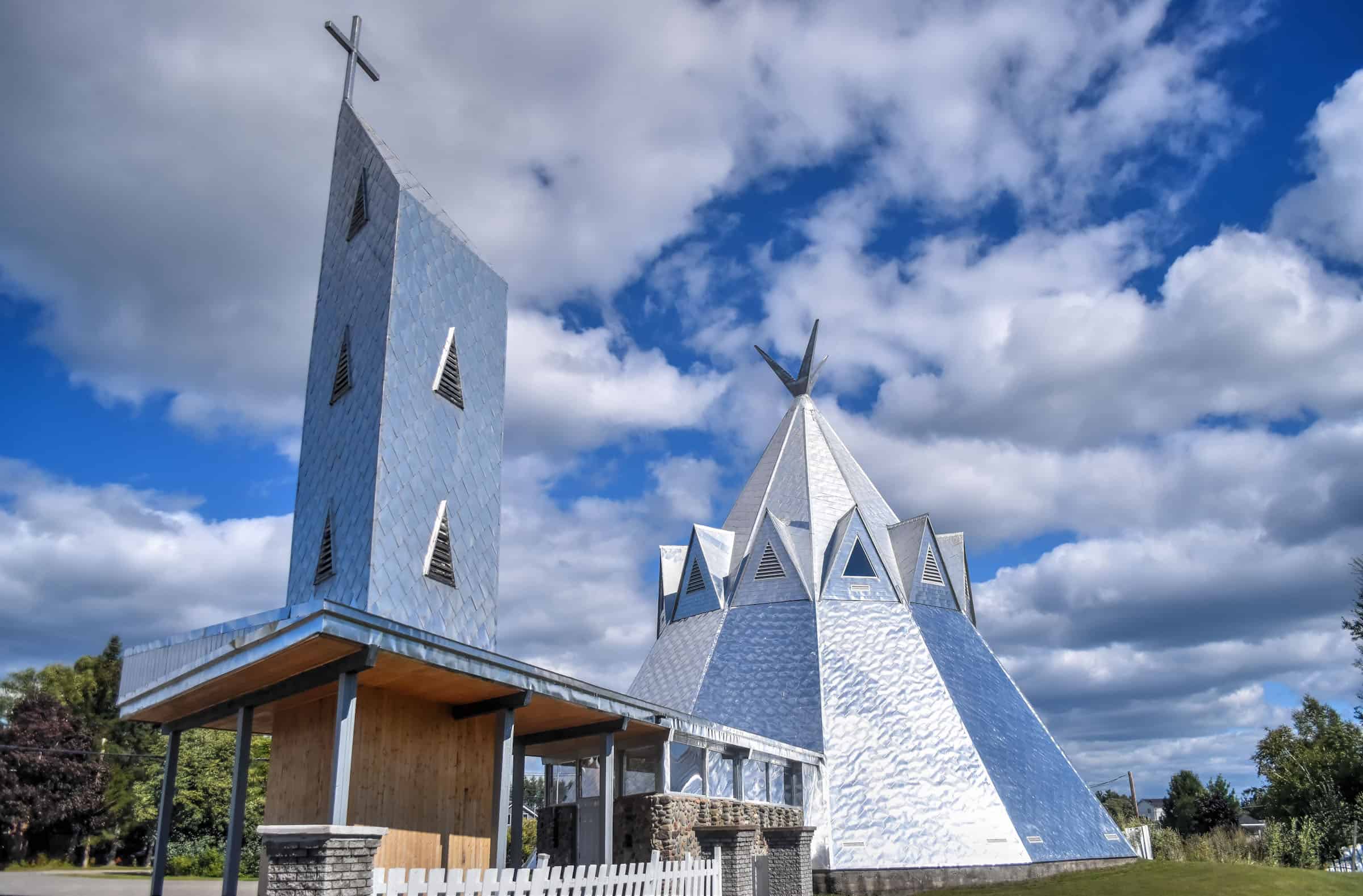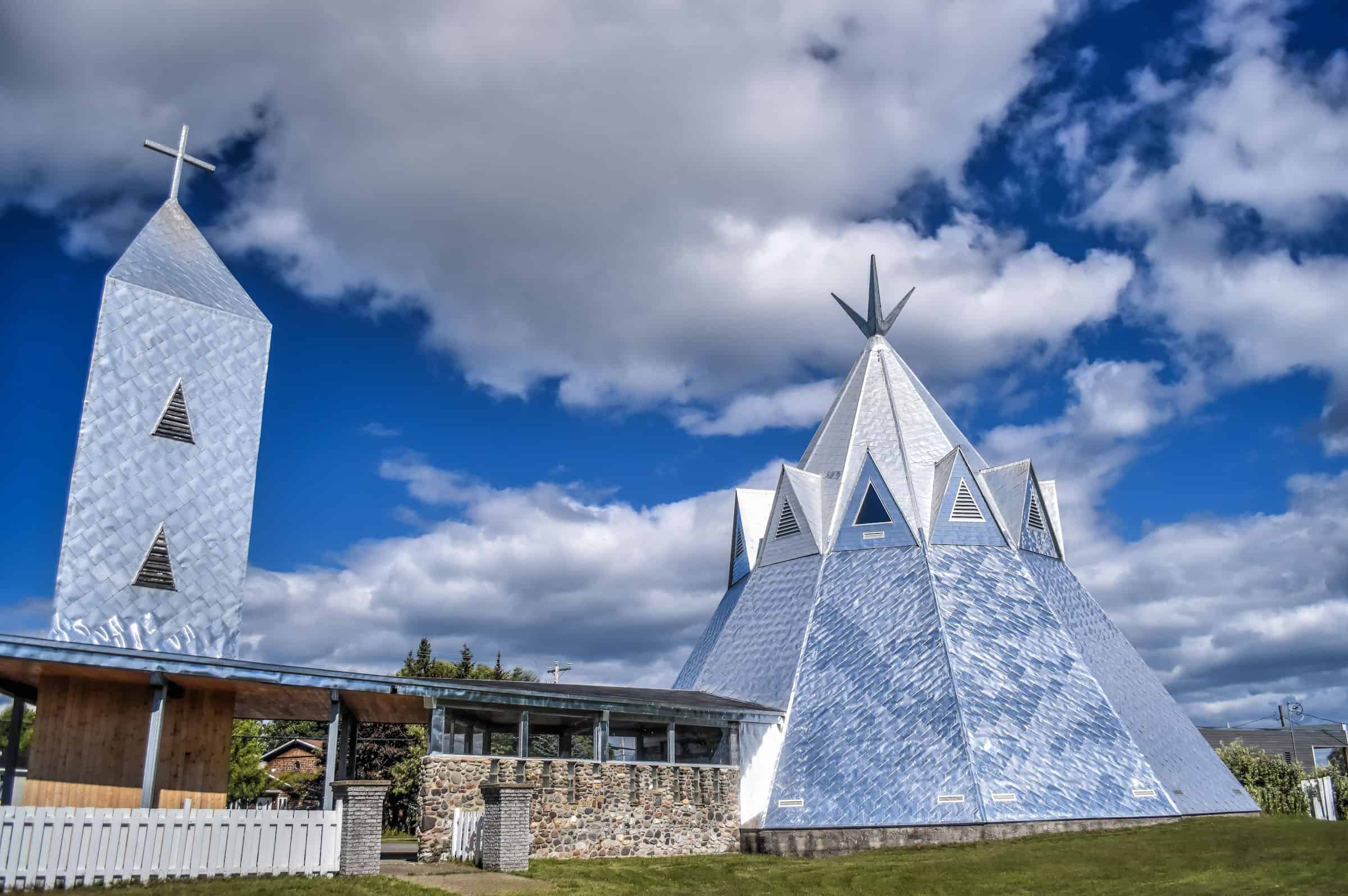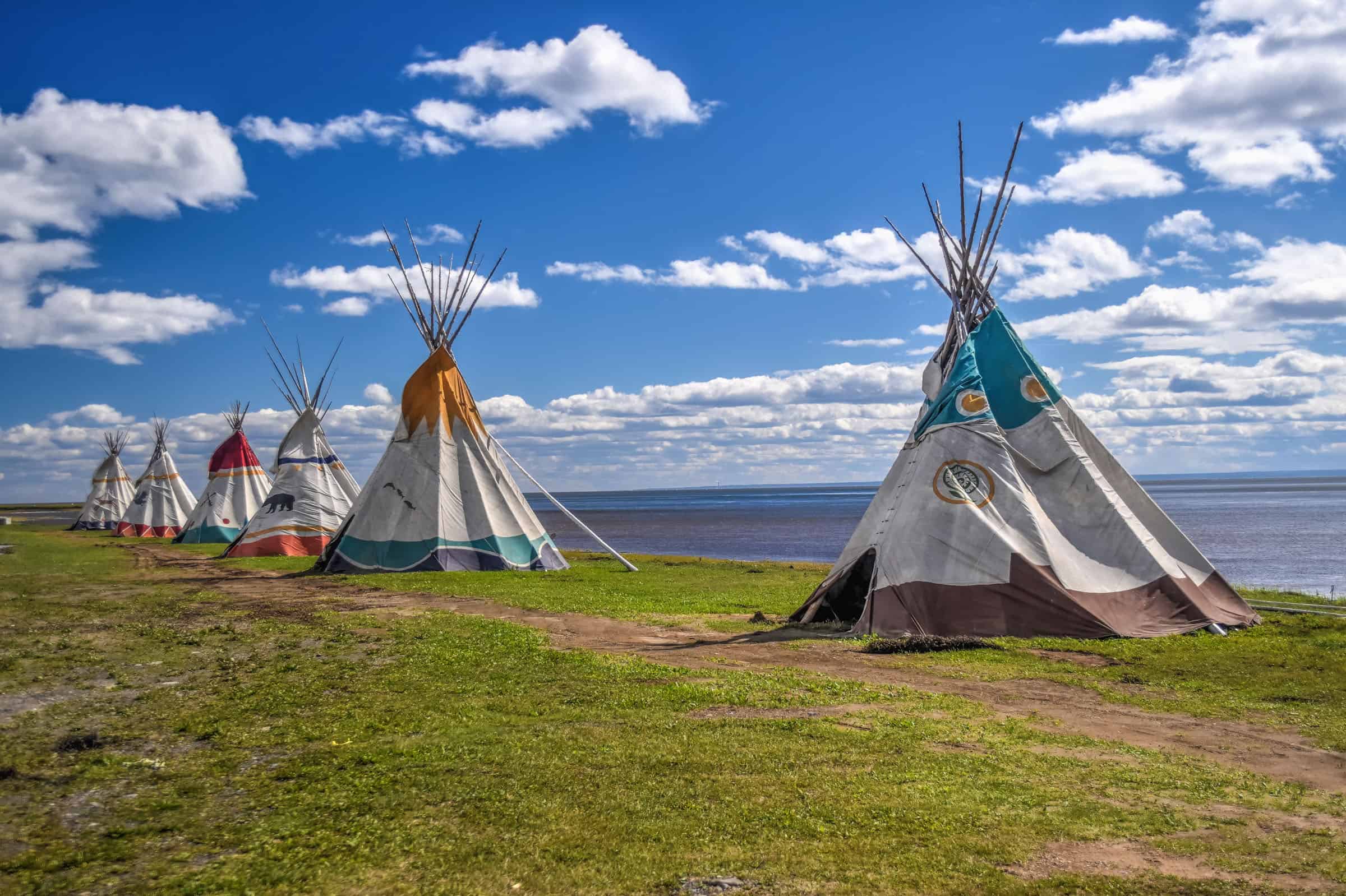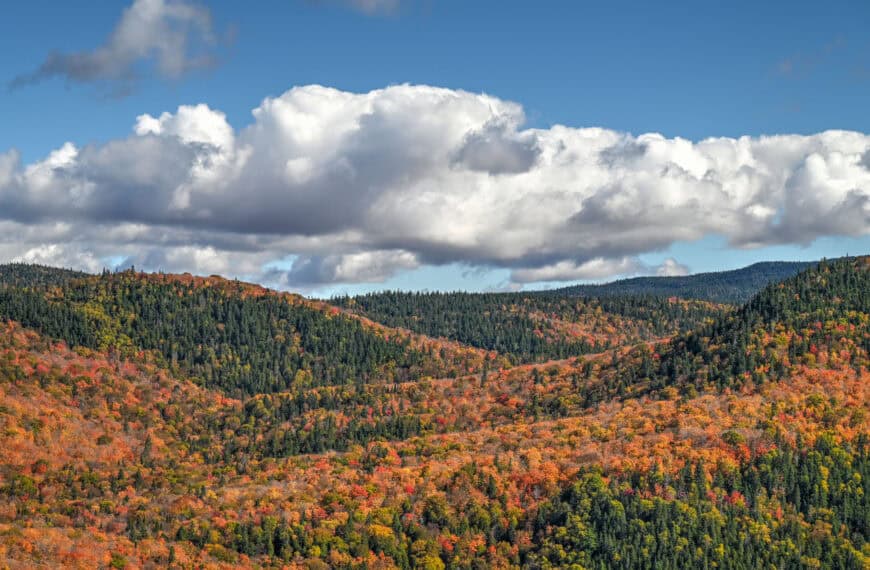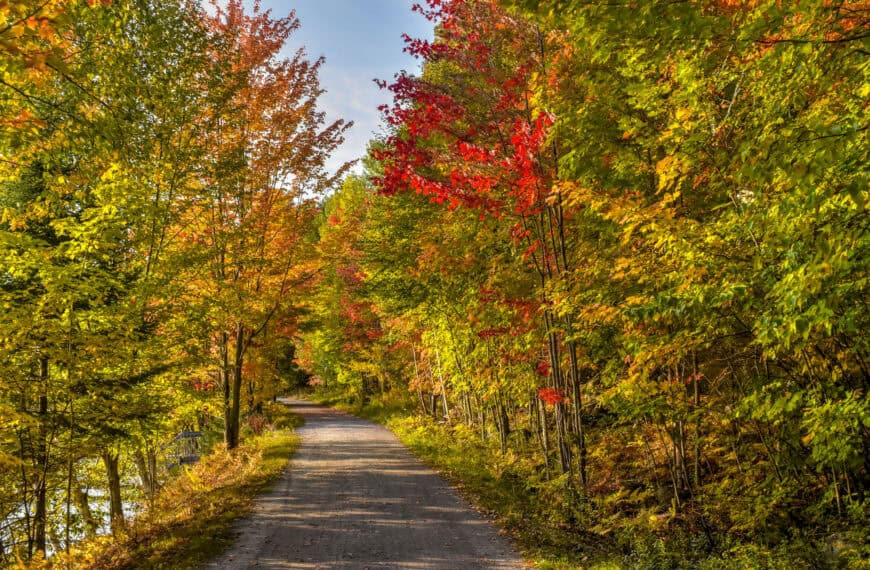In a land surrounded by water on three sides and its eastern tip nicknamed land’s end, the Gaspé Peninsula is a unique environment where dramatic seascapes, crystal clear rivers and towering peaks that form the northern end of the Appalachian mountains call it home. It is also home to several idyllic coastal villages and towns, a thriving cuisine scene featuring the best of what the sea and local land have to offer, and an array of lighthouses where is each more beautiful than the other. Gaspésie is also home to four national parks (one Canadian and three Québec parks), two UNESCO sites, the famous Rocher Percé, the world’s most accessible northern gannet colony, and some of the warmest swimming waters in the Atlantic north of Virginia. To help you plan the perfect trip in this beautiful coastal region of Québec, we’ve put together this Gaspésie Best Attractions and Road Trip Itinerary travel guide.
Disclosure: This page (Gaspésie Best Attractions and Road Trip Itinerary – A Travel Guide) may contain affiliate links to products. At no additional cost to you, we may receive a commission for purchases made through these links. More details can be found on our disclosure and policies page.
You might also be interested in these pages:
10 Awesome Hiking Trails to Discover in Gaspésie
Best Things to See and Do Percé
Gaspésie’s Most Beautiful Lighthouses
















Orientation – Gaspésie Location
Gaspésie (often referred to as the Gaspé Peninsula) is the easternmost region of Québec south of the St-Lawrence River. It is closer to the province of New Brunswick than it is to most other regions of Québec.

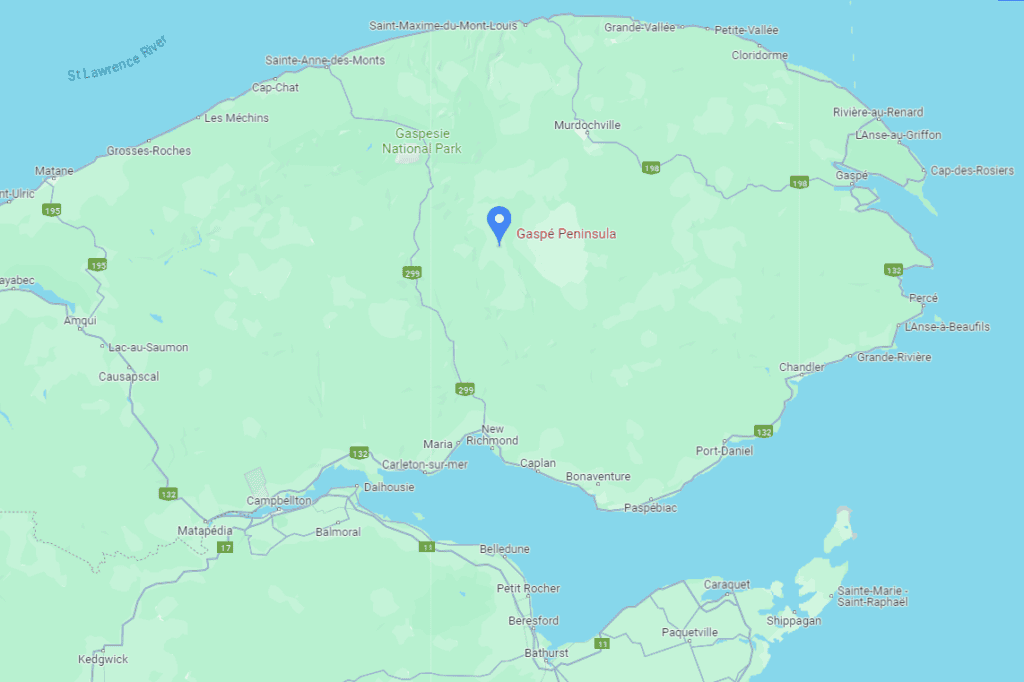
The best way to visit Gaspésie is via an amazing road trip where the coastal scenery is just spectacular. Even though it takes a while to get there, most people will start somewhere southwest of the region, often from the Montreal or Québec City area.
Gaspésie encompasses a fairly large area: reaching the western border from Montreal takes about a 6-hour drive, whereas reaching the eastern point of the region from Montreal takes about a 10-hour drive. It also takes about 10 hours to drive a loop around the peninsula non-stop, but you would obviously be missing out on so much if you did that. We spent roughly two weeks in the area and definitely could have stayed longer.
An alternative way to reach several cities in Gaspésie is to take a bus with Orléans Express from either Montreal, Ottawa or Québec City. However, you’ll be limited in your ability to visit the region afterwards, which is best explored with your own or rented vehicle. Public transportation options in Gaspésie are limited and infrequent given the region’s low population density.
If you need to book a rental vehicle, we highly recommend using Discover Cars to get the best rates on your rental in Montreal.
We also highly recommend Airalo (eSIM card) for your connectivity needs when travelling abroad. Airalo is the world’s first and largest eSIM store with eSIM plans for 200+ countries and regions worldwide.
You can also fly into the region, but you will first have to transit through Montreal or Québec City. Three regional airports in Gaspésie have passenger services (Mont-Joli, Gaspé, and Bonaventure). Gaspé Airport (YGP) has direct flights with Québec City, whereas Bonaventure Airport (YVB), which is along the region’s south coast and is unrelated to the nearby Bonaventure Island, has direct flights from Montreal. Bonaventure airport is the closest to Carleton-sur-Mer, about a 45-minute drive east of town.
About Gaspésie
The Gaspé Peninsula is a beautiful but sparsely populated area in eastern Québec. The region is slightly larger than Belgium, but with a modest population of 140,000 people (in contrast to the nearly 12 million that live in Belgium, which is about 30% more than the 8.5 million that live in the entire Province of Québec). Quebec Route 132 circles the peninsula, following the northern, eastern and southern coasts and then cutting inland along the western end of the peninsula. So you could loop around the entire peninsula without leaving that road.
Sea cliffs dominate the peninsula’s northern shore along the St. Lawrence River. The area is sparsely populated but very scenic with a rugged coastline dotted with small fishing towns and lighthouses. The peninsula’s interior is a rugged northward continuation of the Appalachian Mountains, where you can find several peaks over 1000m in elevation. The southern coast is slightly more densely populated with the scenery changing to open countryside with rolling hills and long narrow beaches along the warm waters of the Baie-des-Chaleurs.
Gaspésie is also known as the Birthplace of Canada. It was near where the town of Gaspé lies today that French explorer Jacques Cartier planted a cross in the name of the King of France on July 24th, 1534. This first site was in some ways chosen by chance, as Cartier was required to take refuge in Gaspé Bay during a storm, and it was there that he met the area’s first inhabitants, the St. Lawrence Iroquoians. The word “Gaspé” comes from the Mi’kmaq (Indigenous Peoples from what are today Canada’s Atlantic Provinces and the Gaspé Peninsula of Quebec, as well as the northeastern region of Maine) word gespe’g, meaning “end”, referring to the end of the land.
When to Visit Gaspésie
Because of its remoteness and harsh winters, many Gaspésie sites and attractions are only open for a few months during the summer months (usually from early/mid-June to mid/late September, with some staying open until mid-October)).
Although the warmest months to visit are July and August, they also tend to be the busiest. We would suggest visiting in late June or late August/early September to benefit from good weather with fewer other tourists around. If you would like to swim the Baie-des-Chaleurs along Gaspésie’s southern coast, the later in the summer the better. That being said, given the short season when the region is open to tourism, there isn’t really a bad time to go.
Gaspésie Road Trip Itinerary – Summary
Our proposed two-week itinerary starts southwest of Gaspésie (in this example it’s from Montreal, but it can be from anywhere really) and circles around the Peninsula, using five separate bases: Gaspésie National Park, Forillon National Park, Percé, Carleton-sur-Mer, BIC National Park.
We opted to drive a long distance on the first day (Montreal –> Gaspésie National Park; 8 hours), which allowed us to never drive more than 5 hours in a day afterwards (and usually just 2-3 hours) when transiting between bases. For those who would prefer not to drive such a long distance in one go, we will discuss about a few places that would make ideal stops to break up the itinerary into smaller segments.
Gaspésie National Park (3 nights)
Gaspésie National Park is located in the heart of the region’s mountainous region, with 25 peaks towering over a thousand metres (3,280 ft). The park is known for its rugged mountains and fantastic hiking opportunities (including the International Appalachian Trail that runs through the park). Unlike the other national parks in Gaspésie, there are no nearby towns, so it’s the perfect place to get lost in nature. There are also several easy and moderate hiking trails for those with less experience.








For more information on visiting the park, its hiking trails, and where to stay, check out our guide on the Best Hiking Trails in Gaspésie National Park.
Forillon National Park (3 nights)
Forillon National Park is one of 42 Canadian National Parks and was the first established in Québec in 1970. It is a stunningly beautiful park in Québec’s Gaspésie region, where the mountains plunge directly into the St Lawrence Gulf. The park includes a rich variety of ecosystems including dense forests, sea cliffs, mountains, wetlands and marshes. The park also marks the Appalachians’ northernmost (and easternmost) tip of continental North America. Forillon is renowned for its beautiful hiking and walking trails, sea kayaking and wildlife viewing.






For more information on visiting the park, its hiking trails, and where to stay, check out our guide on the Best Hiking Trails in Forillon National Park.
Percé (3 nights)
Percé is without a doubt one of Gaspésie’s most famous areas due to its iconic “pierced” rock, the Rocker Percé, located just offshore from the small coastal town. Beyond this famous landmark, Percé and the surrounding area have so much more to offer, definitely enough to keep you entertained for several days. You’ll find several beautiful hiking areas, the world’s second-largest Northern Gannet colony on nearby Bonaventure Island, a few popular microbreweries, and some of the best seafood restaurants the region has to offer.











For more information on visiting and the best hiking trails, check out our Île-Bonaventure-et-du-Rocher-Percé National Park guide (though we cover visiting the Rocher Percé in a separate guide (Best things to see and do in Percé), which includes information on how to visit and experience the Rocher Percé, on hiking trails in the Percé UNESCO Geopark, and on some of the best seafood joints and microbreweries to discover in the area.
Carleton-sur-Mer (3 nights)
Beautifully sandwiched between the sea and mountains, Carleton-sur-Mer makes an excellent base from which to explore the beautiful attractions and scenery that southern Gaspésie has to offer, including swimming in the warm waters of the Baie des Chaleurs (it’s actually where you will find the warmest saltwater on the Atlantic coast north of the state of Virginia and is a member of the 42 most beautiful bays of the world), kayaking in crystal-clear rivers, hiking in the nearby Mont St-Joseph regional Park, and discovering a thriving food scene.





For more information on visiting southern Gaspésie, check out our guide on the Best Attractions and Things to Do in Carleton-Sur-Mer.
BIC National Park / Rimouski (2 nights)
Located just outside the Gaspésie regional limits in the Bas-Saint-Laurent region, near Rimouski, BIC National Park is a unique coastal environment where you will find scenic hiking trails among capes, bays, coves, islands, salt marshes and steep peaks. Here the tides also play a role, as several trails are only accessible during low tide. It’s also a fantastic place to enjoy some sea kayaking. The park’s coast is more jagged than the rest of the shoreline and its mountainous massifs are higher than all others in the region. It’s also a great park for marine wildlife sightings the many harbour and grey seals that frequent the waters of the park.











For more information on visiting this National Park, check out our BIC National Park hiking guide.
Gaspésie Road Trip Itinerary – The Details
Above we focused on the main highlights of a Gaspésie road trip itinerary and areas that can serve as great bases for exploration and overnight stays. The following section will focus on the details of each leg of the journey and the various sights and attractions to see along the way.
First Leg: Montreal to Gaspésie National Park
This is without a doubt the longest leg of the journey, coming in at around 8 hours if you are starting from Montreal. It is definitely not a dull drive though, and we propose several scenic stops where you can stretch out your legs and break up the journey into smaller driving segments.

What to See Along the Way
We will present the various stops in the order that you will cross them as you head northeast toward Gaspésie. Obviously, if you have never been to Québec City, this is a must-visit historic city, but covering its main sights and attractions is beyond the scope of the present guide. Instead, we will begin with a first stop, located about an hour past Lévis/Québec City.
Les Bisons Chouinard – one of only half a dozen bison farms in the province, and one where you can visit these spectacular animals.
La Pocatière – this small town along the St Lawrence coast has several reasons why you might want to stop here. La Ferme LAPOKITA grows beautiful sunflower fields in the summer (usually late July/early August), and right across the street is a small botanical garden. Further across town, there is a large cornfield maze. Lastly, there is a beautiful rest stop along the waterfront with beautiful views across the St Lawrence River, where you will find a large gazebo, several picnic tables and some swing sets.






Kamouraska – A beautiful and quaint little village located along the shores of the St Lawrence River. Along the main drag, you’ll find charming old homes turned into Inns and several restaurants featuring local delicacies here. There’s not much to do here, but you might still want to linger due to the charming rural atmosphere.
Tête d’Allumette Microbrewery – A great stop if you want to enjoy a refreshing locally brewed beer while enjoying the stunning views of the St Lawrence River from their large outdoor patio.
Le Petit Phare – Located in a coastal park offering 5 km of walking trails with information signs about the fauna and flora of the surrounding flats, this tiny lighthouse was built as a reminder of the old Saint-André lighthouse from nearby Long Pelerin Island, which has since been demolished and replaced with the skeletal metal tower. You can enter the lighthouse where a table a chairs offer a great area for a unique picnic.





After le Petit Phare you’ll pass by BIC National Park, which is the last main stop of the itinerary. So the following sites could be visited on either the first or the fourth leg of the trip (when driving from Carleton-sur-Mer to BIC National Park
Pointe-au Père Historic Site and Lighthouse – both are located just a few km north of Rimouski. It was here in 1914 the worst maritime disaster in Canadian history: 1,012 people died when the Empress of Ireland collided with the SS Storstad. Fortunately, there were 465 survivors – upon receiving an S.O.S signal, the lighthouse station staff at Pointe-au-Père contacted rescuers in the surrounding area to help evacuate the sinking ship.
Also, what you might not expect to see here is the 90m-long Okanada submarine, Canada’s first publicly accessible submarine.
For more information on visiting this lighthouse and others in Gaspésie, check out our guide on Gaspésie’s Most Beautiful Lighthouses.
Saint-Luce Beach – A charming village by the sea, with beautifully colored homes and a 2.5 km-long beach.
Centre d’Art Marcel Gagnon (Sainte Flavie) – Just outside of the art center, in the St Lawrence river itself, you’ll find a large-scale art project, called Le Grand Rassemblement (The Grand Gathering in English), which is the work of Canadian artist Marcel Gagnon. After carving over one hundred figures, he placed them along the shore and at varying depths in the river so that they would appear and disappear with the tides. It’s definitely an interesting attraction to see, and it’s free.



Jardins de Métis – Recognized as one of the largest gardens in North America, the Jardins de Métis is a garden paradise just off the banks of the St. Lawrence. Some 3,000 species and varieties of plants are spread across around fifteen gardens. The International Garden Festival, which takes place every summer on a site adjacent to the historic gardens, presents contemporary gardens designed by landscape architects and artists from around the world.
Vignoble Carpinteri – To experience a taste of Tuscany while in Gaspésie, look no further than the fantastic Carpinteri winery, which is the northernmost winery in the Americas. The vineyards are set in a beautiful rustic setting with a large villa inspired Inspired by traditional Italian villas from the early 19th century. Rooms are available for overnight stays here and the winery offers a variety of wine-tasting tours (open from May 1 to Nov 30).
Once you’ve passed the winery, you are just under two hours from Gaspésie National Park. We don’t recommend any further stops along the way, but most of the remaining drive is quite beautiful and scenic along the river (apart from when driving through the larger towns of Matane and Saint-Anne-des-Monts). The final stretch inland offers a dramatic change of scenery as you become surrounded by towering mountains.
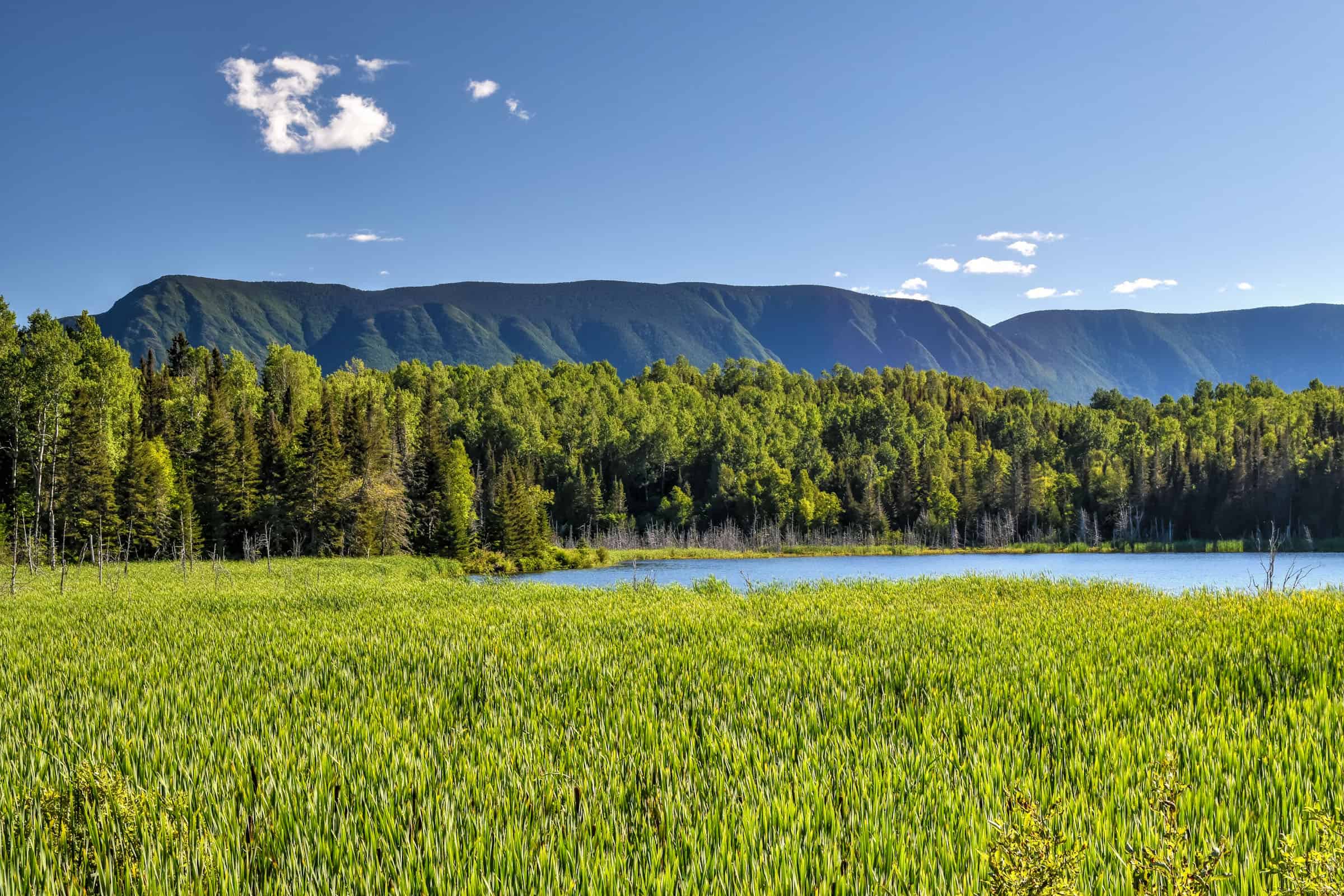
Where to Stay
If you don’t want to drive all the way to Gaspésie National Park on the first day, there are many, many quaint coastal villages in which you can stay overnight to break up the long drive. We would particularly recommend either Kamouraska (4 hours from Montreal) or Sainte-Flavie (6 hours). Alternatively, if you prefer larger towns, the two largest that you’ll cross beyond Québec City are Rivière-du-Loup (4h30) and Rimouski (5h30).
We elected to stay right in the center of Gaspésie National Park. There are several options to stay within the park, ranging from standard campgrounds to rustic chalets and cabins. We opted to stay in the Gite du Mont-Albert, which provided the best combination of comfort and a great central location. It’s a beautiful Inn, located in the center of the park a short walk from several trailheads and the Discovery and Visitor Center. There’s also a fantastic restaurant, spa and outdoor swimming pool on site.



Second Leg: Gaspésie National Park to Forillon National Park
This is the third shortest leg of the Gaspésie itinerary. Although there is a more direct route that crosses inland, we highly recommend taking the slightly longer coastal route. The scenery is so beautiful as the road winds its way between the cliffs and the sea, with the occasional picturesque village that you might want to stop at and stroll through. It’s also the route where you will cross many photogenic lighthouses.
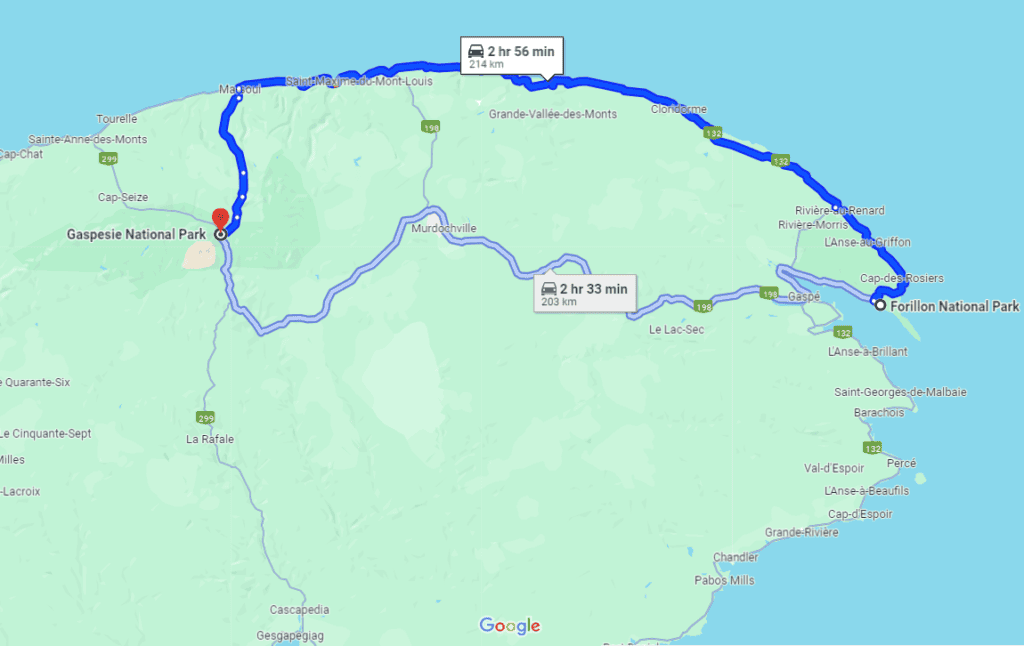
What to See Along the Way
Beautiful roadside views and coastal villages – The scenery along this leg of the Gaspésie road trip is quite spectacular at times. One particularly scenic portion is the area around Grande-Vallée.






La Martre Lighthouse – La Martre Lighthouse is definitely one of the more original lighthouses you will cross along the Gaspésie coastline. For one, it is painted a bright red along with its nearby buildings and, second, it has an unusual octagonal base shape.



Cap-de-la-Madeleine Lighthouse – Long before there was a lighthouse, ship captains used the cape to establish their position on the river. The first lighthouse was built here in 1871, with the current tower (pictured above) completed around 1907.



A coffee shop, craft shop, museum, and picnic area are located adjacent to the lighthouse. The lighthouse is open daily from June 1st through the end of September. Guided tours are also available.
Pointe-à-la-Renommée Lighthouse – The first lighthouse built here, which was made entirely of wood, was put into service in 1880. It was replaced by the current incarnation of the lighthouse in 1907, which continued to operate until 1975. This historic site was home to North America’s first maritime radio station, installed by Marconi’s Wireless Telegraph Company in 1904, which was declared a national historic event in 2011. Access to the lighthouse site costs 3$ per person (2023), and guided tours are available at an additional cost. There are several short and long hiking trails that pass by the lighthouse site.





If you are looking to grab a bit to eat along the way, we can definitely recommend La Cantine du Quai in Rivière-au-Renard. What looks like your basic fast food shack serves delicious and fresh seafood plates with awesome views of the town’s marina.
Cap-des-Rosiers Lighthouse – At 34 metres (112 feet) high, the Cap-des-Rosiers Lighthouse is the tallest in Canada – and it is visible for miles all around (you can see it in the distance from several hiking trails in nearby Forillon National Park). It was declared a national historic site in 1974 and the tower itself was designated a Classified Federal Heritage Building in 1994 — the lighthouse is one of just seven in Canada to hold this double classification. The lighthouse site opens on June 24 and closes at the beginning of September, when guided tours are available.





Once you’ve visited the lighthouse, Forillon National Park is just beyond the next bend.
Where to Stay
Forillon National Park has several options for those who like to spend the night in a more rustic setting, including front-country and backcountry campgrounds, yurts and a few different glamping and cabin options.
For those that prefer a slightly more urban option, the town of Gaspé is less than 30 minutes away with several hotels and various accommodation options. We opted for something in between, a standard motel room just on the outskirts of the national park. Although the rooms are rather basic, the location is simply phenomenal and the views across the bay are spectacular. We can definitely recommend staying at Le Motel du Haut Phare, in Cap-des-Rosiers, which is nothing more than a tiny village on the outskirts of the national park. All the pictures below were taken less than 50 feet from the motel – and some from directly from the porch.





And just walking an extra two minutes from the hotel, you can get even more great views of the coastline and the lighthouse.



Third Leg: Forillon National Park to Percé
This is the shortest leg of our proposed Gaspésie road trip Itinerary. Although it may not seem worth switching accommodations here, we felt that there was so much to see and do in both Forillon National Park and the Percé area that it justified this decision. You could also decide to just stay in one of the two (or somewhere in the middle) and then day-trip to the various places you want to visit, but we felt that having two separate bases here minimized the amount of necessary daily driving.

What to See Along the Way
Fort Péninsule – Fort Peninsula is the only World War II shore battery that has been completely preserved and that is open to the public in Quebec. It’s actually located within Forillon National Park, near the Penouille visitor center and is free to visit if you pay your park entrance fee. From 1942 to 1944, German “U-boats” (submarines) entered the St. Lawrence Gulf and River to disrupt critical supply routes between Canada and the Allied forces in Europe, where they sank 23 ships during what has become known as the Battle of the St. Lawrence. In response to this danger, Canadian Navy strategists chose this site as a naval base to defend the St. Lawrence Gulf and River.



Gaspé – Gaspé is both the administrative capital and the largest town of the Gaspé Peninsula and can provide a worthwhile stop between Forillon National Park and Percé. There’s a lovely waterfront promenade and a well-regarded history museum on its eastern end, and a short walk from the promenade, you will find the only wooden cathedral in North America.





Barachois Train Bridge – A unique location as you approach Percé is the Barachois Train Bridge, which was built along a long thin sand bar creating a lagoon of sorts on its western side. There’s a beach that runs along the side of the train track along most of the sand bar, which is accessible from the south. If you look closely, you can see the Rocher Percé and Bonaventure Island in the distance.



Where to Stay
There are many options in and around Percé, despite the generally small size of the town. We loved our stay in the Riôtel Percé, which is more of a high-end motel along the waterfront with a restaurant and spa. The rooms are beautiful and very spacious, but the real highlight was the fantastic view from our room (see below – and in all kinds of weather) and the on-site restaurant was one of our favourites in town.



Fourth Leg: Percé to Carleton-sur-Mer
This leg has a different feel than the previous ones as you start to leave the mountains and tall cliffs behind you as you enter flatter lands. You will also start to see land (the province of New Brunswick) across the water as the open sea turns into the Baie-des-Chaleurs, a body of water known for its unusually high temperatures.

What to See Along the Way
L’Anse-à-Beaufils – This small coastal fishing village has a beautiful marina and few noteworthy restaurants. It is home to a historic general store and the Pit Caribou microbrewery, where you can sample beers with an awesome oceanside view.



Grande-Rivière Train Bridge rest area – a nice rest area with picnic tables and restrooms, where you can admire beautiful coastal views and the train bridge that goes over a small beach.



Hope Beach – a small but beautiful beach with red cliffs on one side and open waters on the other.
Paspébiac National Historic Site – This historic site is a complex of ten buildings in Paspébiac, which were built between 1783 and 1900 and is the founding site of the Robin and Le Boutillier Brothers companies. In the 19th century, the site constituted one of the largest export ports of dried cod in the world. The largest building of the complex, the Entrepôt Le Boutillier, which is made entirely of wood, is one of the largest fishing buildings ever built in America.
Gaspésie Bioparc – Although we suggest this place as a good day trip option from Carleton-sur-Mer, especially if combined with a kayaking adventure down the Bonaventure River, it can also make a great stop on your way to Carleton-sur-Mer. The Gaspésie Bioparc is a museum institution with a scientific vocation that gives prominence to the indigenous species of Quebec (over 40 of them) all of which are subdivided into 5 different ecosystems: the bay, the barachois, the river, the forest and the tundra. The Bioparc is open daily from early June until mid-October (9h – 17h). The entry fee for an adult is $26 (2024) with reduced rates for children. Tickets can be purchased online in advance here.






Gesgapegiag Pow-wow Grounds – Gesgapegiag is one of two First Nations reserves on the south shore of the Gaspésie, most of whom are of Mi’kmaq ancestry. Here you can see impressive Gesgapegiag First Nation Ceremonial Pow-wow grounds with colourful wigwams and the unique wigwam-shaped Kateri Tekakwitha Church. Both are easily visible from the main road (132), about 15 minutes east of Carleton-sur-Mer.



Where to Stay
Being such a small town located along the coastline, most of the best accommodation options are packed near one another, and all are pretty close to the waterfront, promenades and restaurants, so there isn’t really a bad area to stay in. We can recommend Motel L’abri, which is one of the better-rated options in the area, conveniently located near the town’s center, and has several rooms equipped with large kitchenettes for self-catering.
Another interesting option is to stay in one of the Mont Saint-Joseph Geodomes for $256/night (2024). It’s an interesting place to stay with amazing views (assuming it’s not too cloudy such as when we passed by a few of them) if you don’t mind being a bit further from everything else.
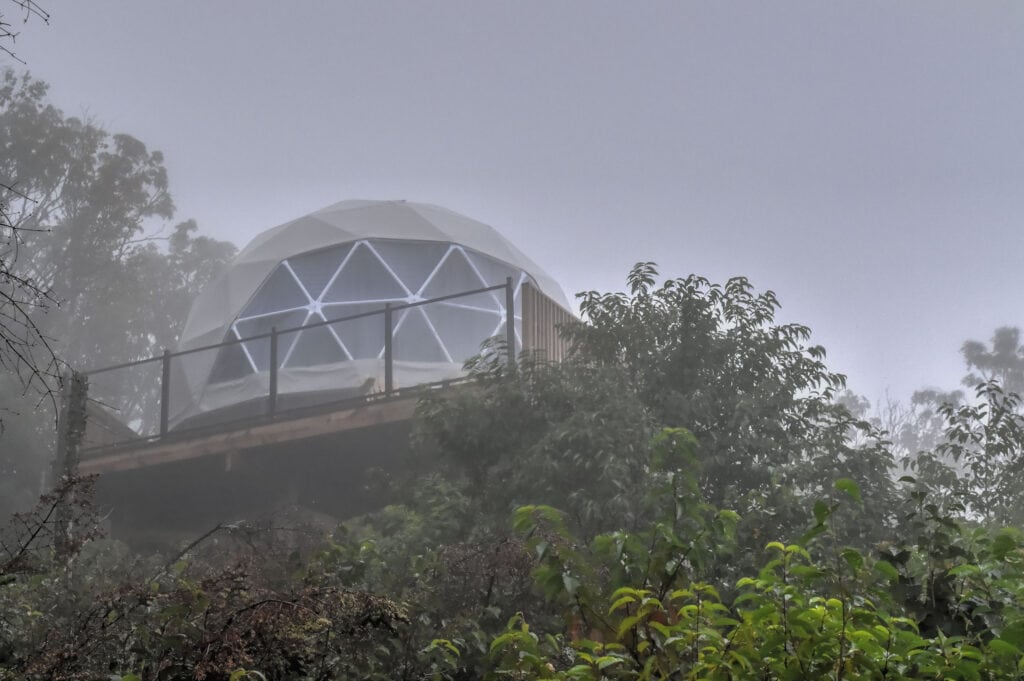
Fifth Leg: Carleton-sur-Mer to BIC National Park
This leg is very different than all the other legs, as you will spend most of it driving inland, crossing the Gaspé Peninsula through the Matapedia valley.
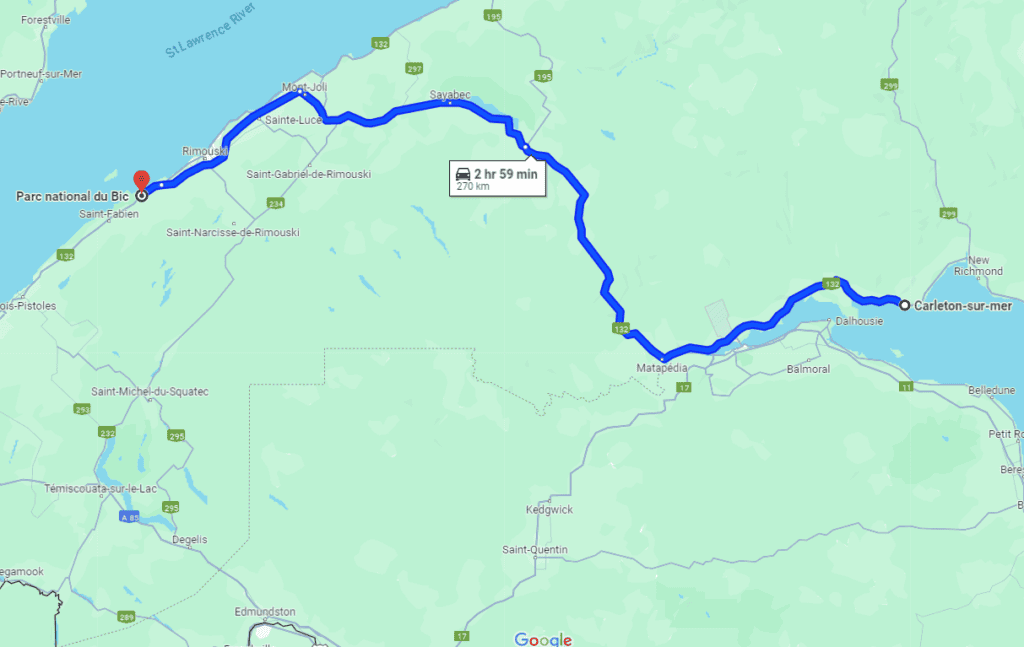
What to See Along the Way
Miguasha Fossil Park – Designated a UNESCO World Heritage Site in 1999 in recognition of its wealth of well-preserved fossils, Migusha Fossil Park preserves a world-renowned fossil-rich cliff and is home to the only fully intact specimen of Elpistostege watsoni ever discovered. Elpistostege watsoni, which lived 380 million years ago, is an extinct marine species that marks the transition between aquatic and terrestrial life; it was essentially a tetrapod-like fish that had digits embedded in its pectoral fin and could potentially walk on land.
Two-River Belvedere – This wooden belvedere with a unique curved architecture is located in Matapédia, the point where the 132 road turns inland to cut across the gaspé peninsula towards the St-Lawrence River. Pictured below, to the left, we see the intersection of the Restigouche and Matapedia Rivers, the former which separates Québec and New Brunswick. It’s a short but steep 5-minute climb to reach the Belvedere from street level.



Covered Bridges – There are several photogenic covered bridges that cross the Matapédia River along the 132, including the Routhierville and the Heppel covered bridges.


Once you’ve reached the St Lawrence River, there are several places you can visit on your way to BIC National Park that we highlighted in the first leg of the journey (in case you skipped them or want to see them again): Jardins de Métis (botanical gardens), Centre d’Art Marcel Gagnon (statues in the water), Ste-Luce Beach, Pointe-au-Père Lighthouse and Historic Site, and if you don’t mind a slight detour, the Vignoble Carpinteri winery.
Where to Stay
There are many camping and cabin options in BIC National Park, otherwise, the nearby town of Rimouski has a wide range of accommodation options for all budgets.
The Final Leg: BIC National Park to Montreal
This final leg of the road trip is 5h50 km long and will take about 5h30 on average to drive.
There isn’t much new to add here in terms of what to see that wasn’t mentioned for the First leg of the trip. It’s a good opportunity to stop in places you might have not had the time to during the first leg or to stop again at places you really enjoyed.
Gaspésie Road Trip Itinerary Tweak Ideas
The itinerary we proposed above is obviously highly customizable based on your needs, preferences, and the amount of time you can dedicate to your trip. With more time at our disposal, we could have easily added an extra night to each of our stops – there’s that much to see and do in Gaspésie. We could have gone on more boat excursions, visited additional historic sites, hiked more mountains, sampled more local seafood delicacies, etc.
Are you an avid hiker? – If you love to climb mountains, then you might want to spend more time in Gaspésie National Park. Although there are fantastic trails in all the parks we visited, you’ll find more options, Gaspésie National Park not only has a great number of trails to offer but it also has the highest peaks to climb.
Combine Forillon National Park and Percé? – We touched on this earlier, both Forillon and Percé could be visited from the same base (either Percé, Forillon, or somewhere in between) given their close proximity to one another. We were happy to stay in two different places to minimize the amount of daily driving, but you can easily choose just one base if you want to reduce the amount of hotel/accommodation changes, or if you find one lodging option you particularly like, or if you have a greater interest in the sites and attractions of one location over the other.
Gaspé Peninsula: clockwise or counterclockwise? – This question gets asked a lot, and honestly, there is no wrong answer. We debated this decision and decided to start with northern Gaspésie (clockwise loop direction). We wanted to start with a bang and our research indicated that the scenery was more spectacular along the northern route with the gently swerving 132 coastal road sandwiched between tall cliffs and the sea. We wanted to end with the Baie-des-Chaleurs area along the southern coast known for its beaches and swimming – a great place to relax and unwind.
How Many Days Do You Need in Gaspésie? – Driving around the entire peninsula will take about 10 hours, non-stop. So you could see several key highlights with just a few days in the region. But if you want to see most of what we described above, we recommend at least a week in the region, plus a day to get to Gaspésie and another to return from the region. We were happy with our 12 days in Gapésie + 2 long travel days to get to and from there.
Planning a trip to Gaspésie?
You might be interested in these pages (coming soon):
Gaspésie Best Attractions and Road Trip Itinerary
10 Awesome Hiking Trails to Discover in Gaspésie
Gaspésie’s Most Beautiful Lighthouses
We also highly recommend these guidebooks:
Lonely Planet Best Road Trips Ontario & Quebec
Gaspé the Romantique ‘Revisited’: A Road Trip Guide to the History, Legends and Attractions
Want to Discover More Quebec Hiking Trails?
You might be interested in these pages (coming soon):
Best National Parks for Hiking Near Montreal
Best Hiking Trails in the Laurentians
Best Hiking Trails in the Eastern Townships
Photography Gear
If you like our photography, you might be interested in some of the gear we use to shoot our travel and hiking destinations.
Camera Body – Nikon Z 6ii Fx-series Mirrorless Body
Main Lens – NIKON 24-120mm F/4G ED VR AF-S
Zoom Lens – Sigma 745-306 150-600mm f/5-6.3
Polarizing filters – Urth Circular Polarizing (CPL)
Camera Tripod – K&F Concept 64-inch Camera Tripod
Mini-tripod – Lammcou Flexible Camera Tripod
Camera/hiking backpack – Vanguard Alta Rise 48 Backpack
Universal Travel Adapter – VYLEE Universal International Power Travel Plug
Other Travel Essentials
Travel Insurance
SafetyWing is a travel insurance company that offers comprehensive coverage for travellers. Includes Medical Insurance and Travel Insurance. Primarily geared towards long-term travellers, digital nomads, and expats.
e-Sim cards
Airalo is the world’s first and largest eSIM store with eSIM plans for 200+ countries and regions worldwide. With Airalo eSIMs, travellers can get connected the moment they land at their destination and avoid nasty data roaming charges
eSIMS are a sustainable alternative to single-use SIM cards – they are 100% digital, require less energy to produce and be re-used rather than disposed of.
Car Rentals
Discover Cars is our go-to website for car rentals. We almost always find our preferred rate there.
Transfer from Airport
Welcome Pickups is our favourite private transfer service, which you can pre-book at a fixed price. Currently available in 220 cities all over the world (mostly in Europe, but with several major cities in Asia, the Middle East and the US).
Kiwitaxi is another private transfer service – we haven’t tried it yet, but it’s currently available in a few more countries (102 as of 2024).
Hotels and Accommodations (coming soon)
Photography Prints
If you found this blog useful, you can help support our blog by purchasing low-cost digital prints. Printed physical prints are also available for purchase.








—–
Well, that wraps it up! We hope you enjoyed our Best Attractions and Things to Do in Carleton-sur-Mer and that it will prove useful for planning your trip to the beautiful Gaspésie region of Québec.
—–
You might also be interested in these related pages:
